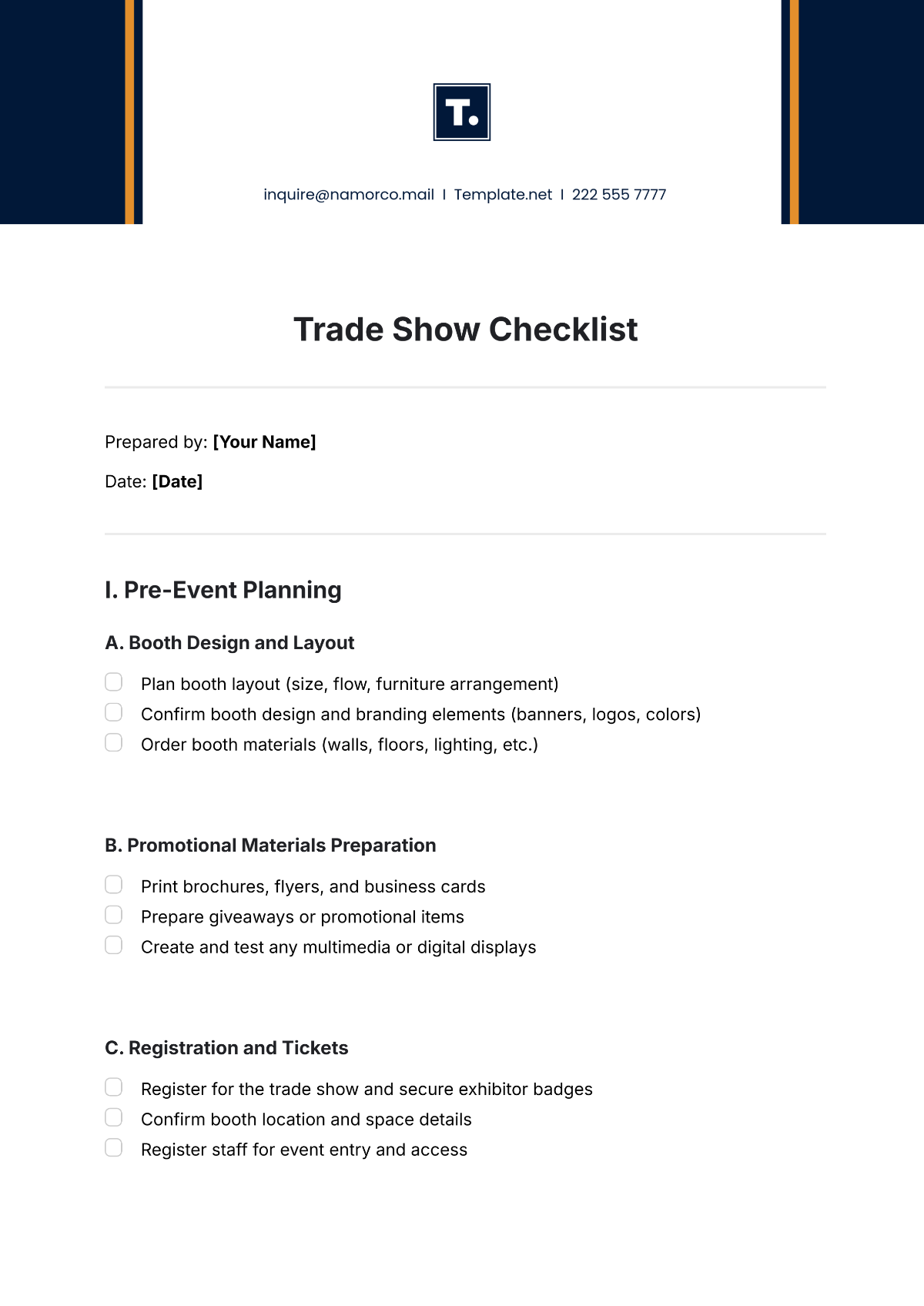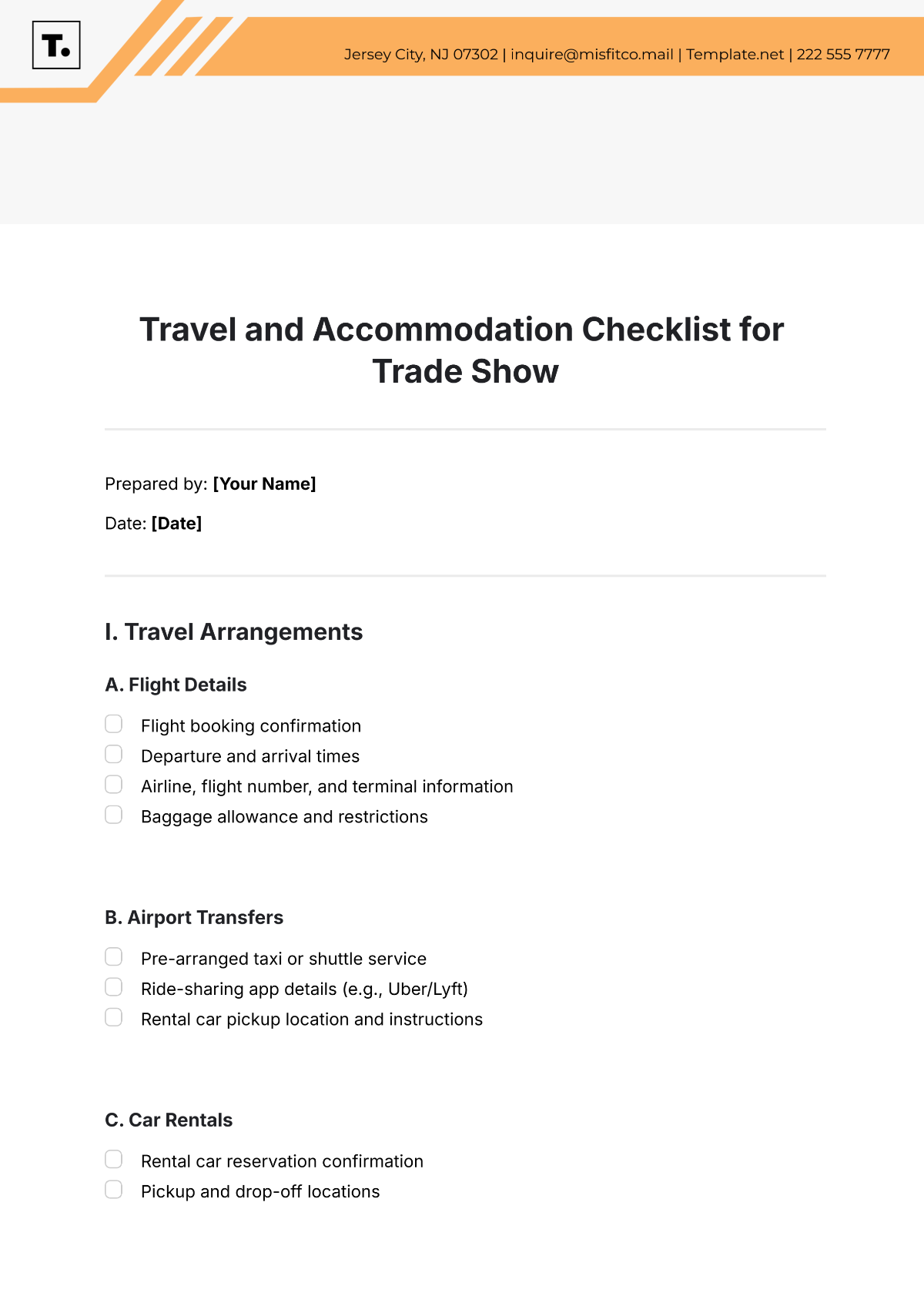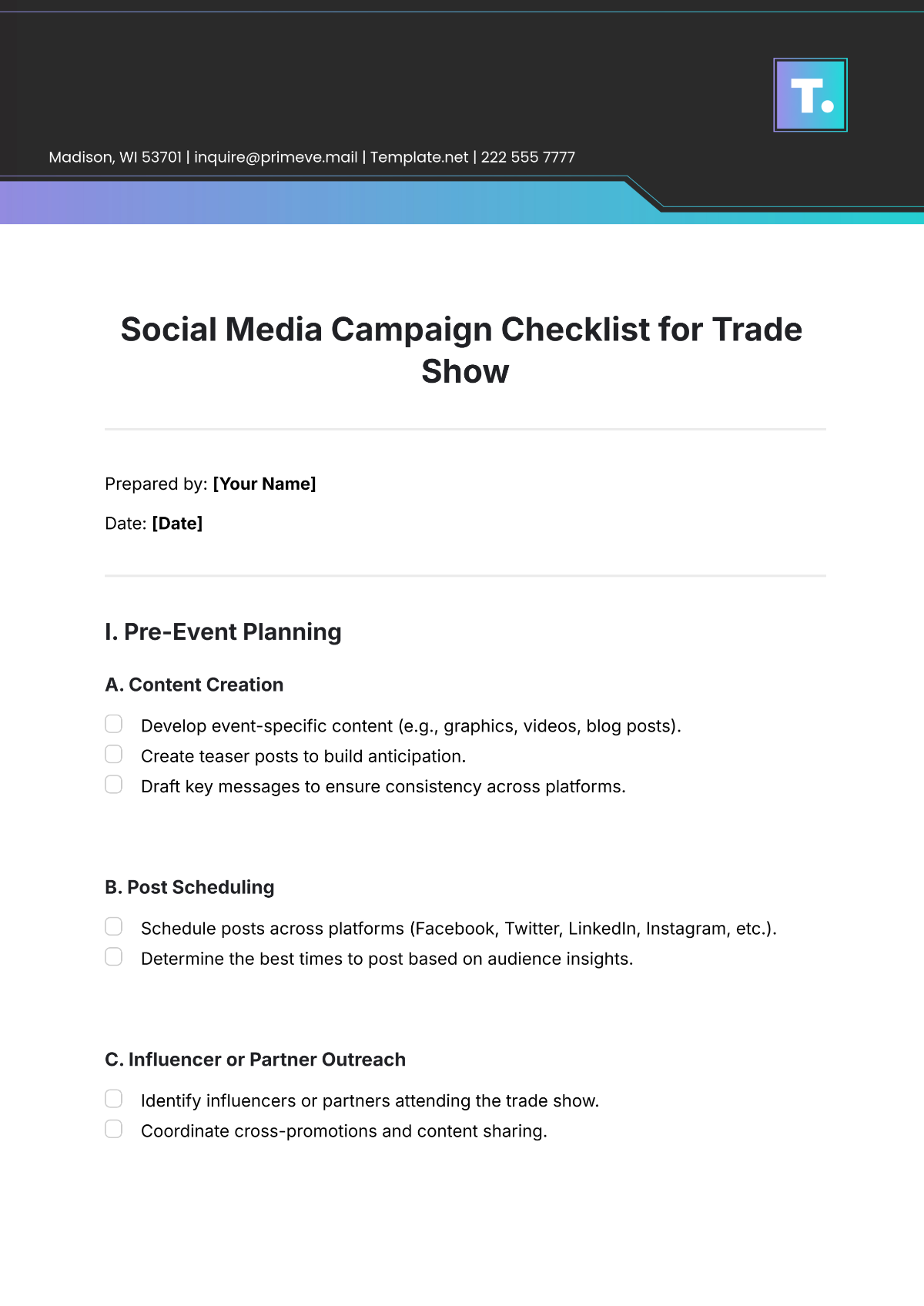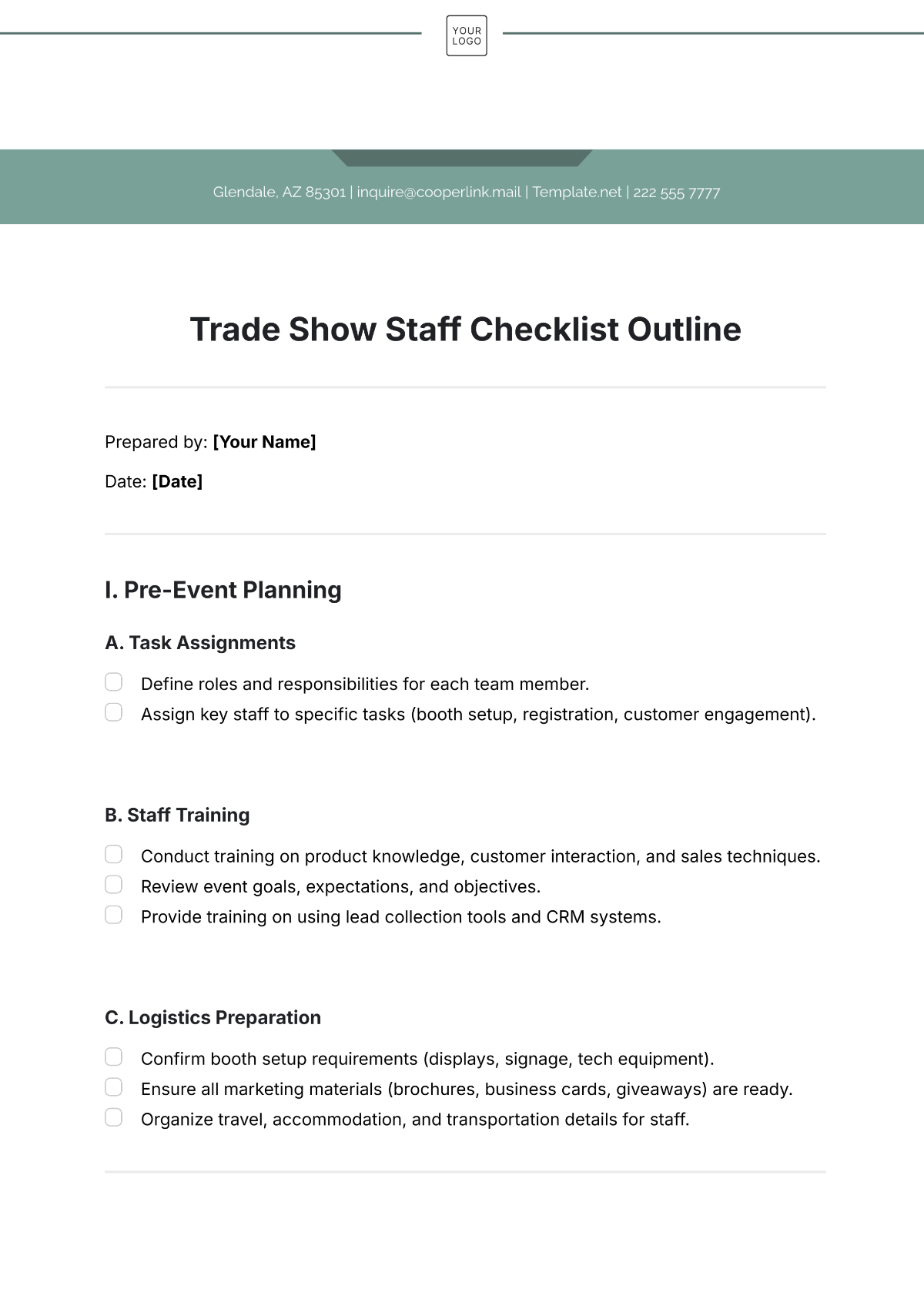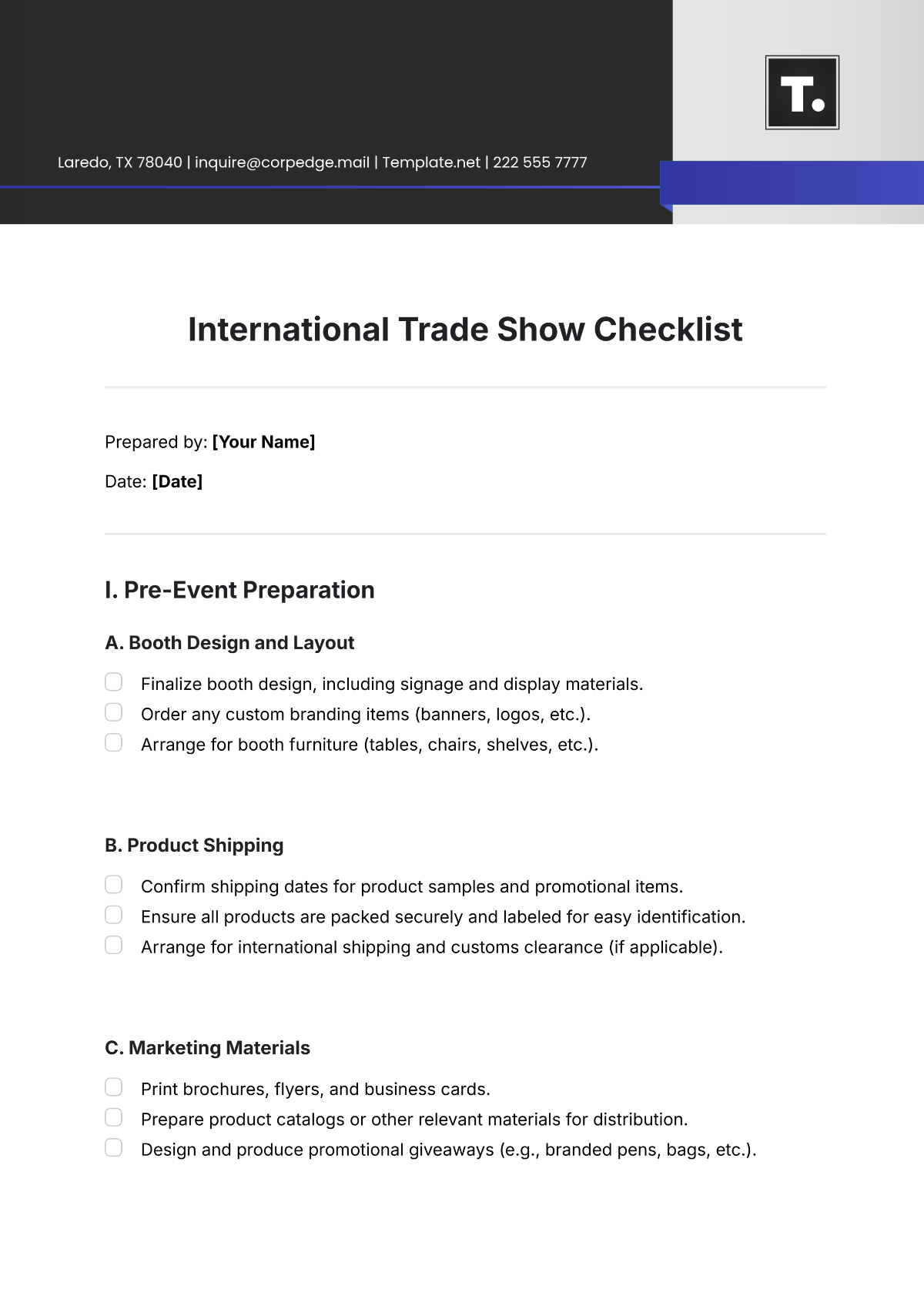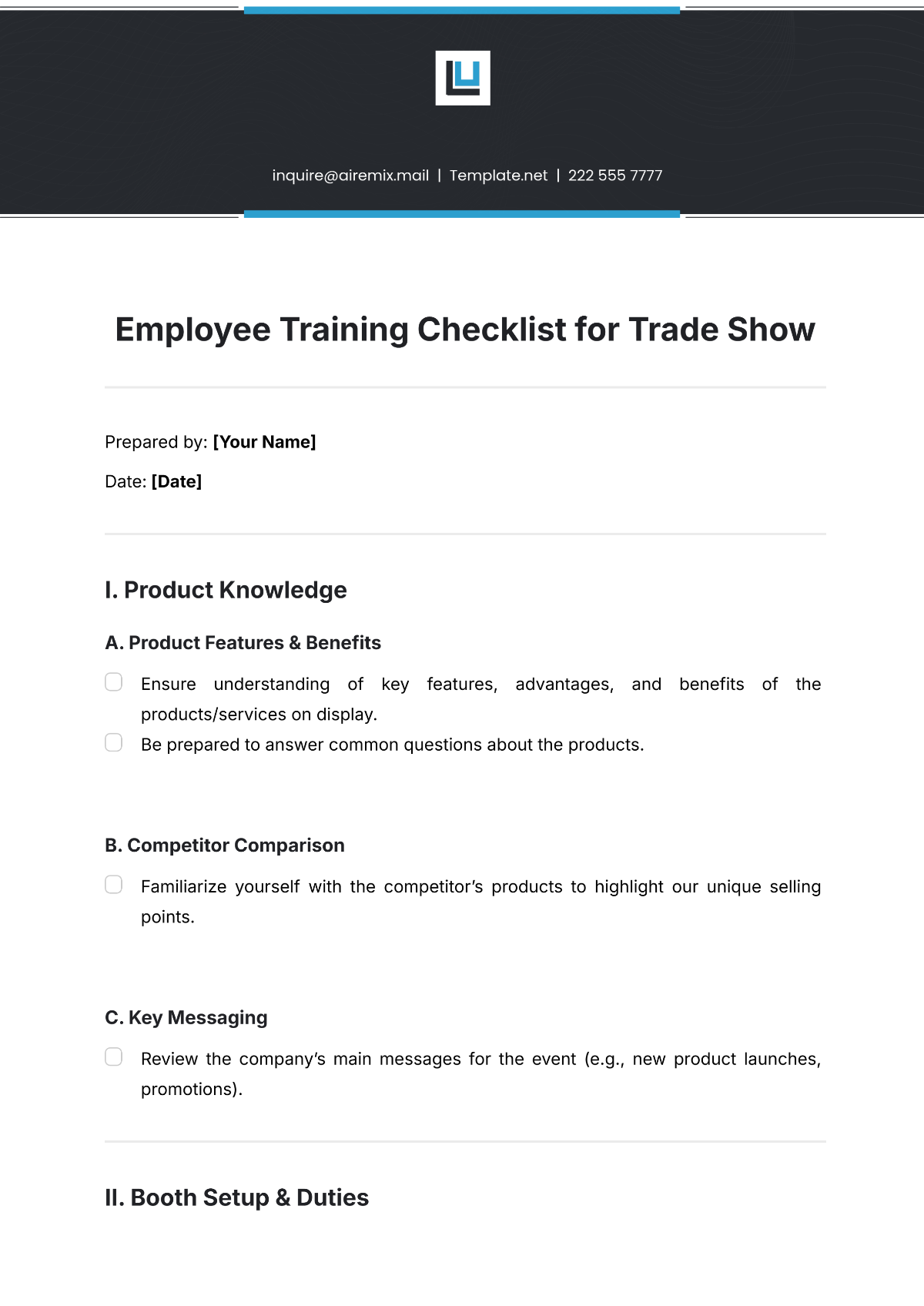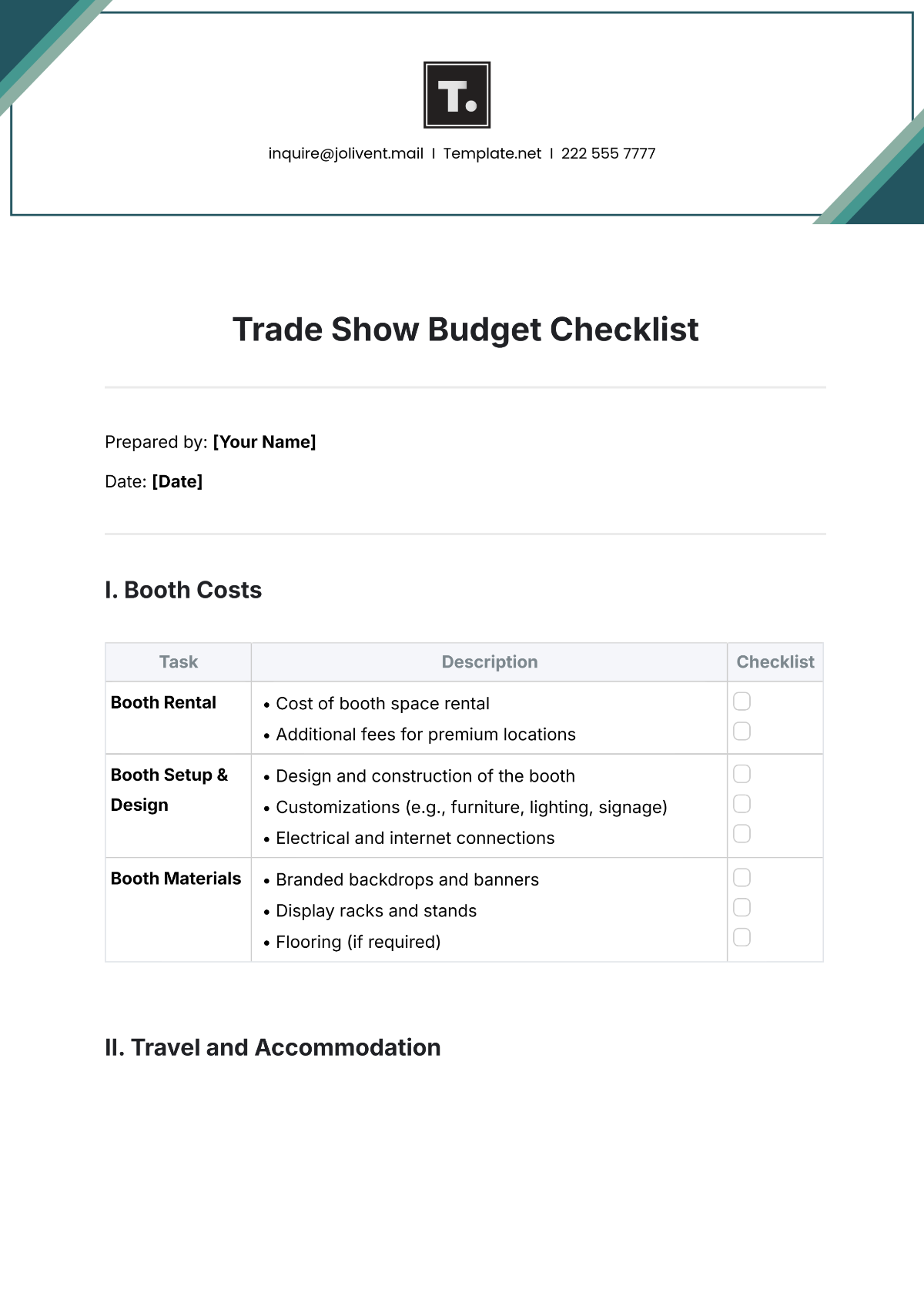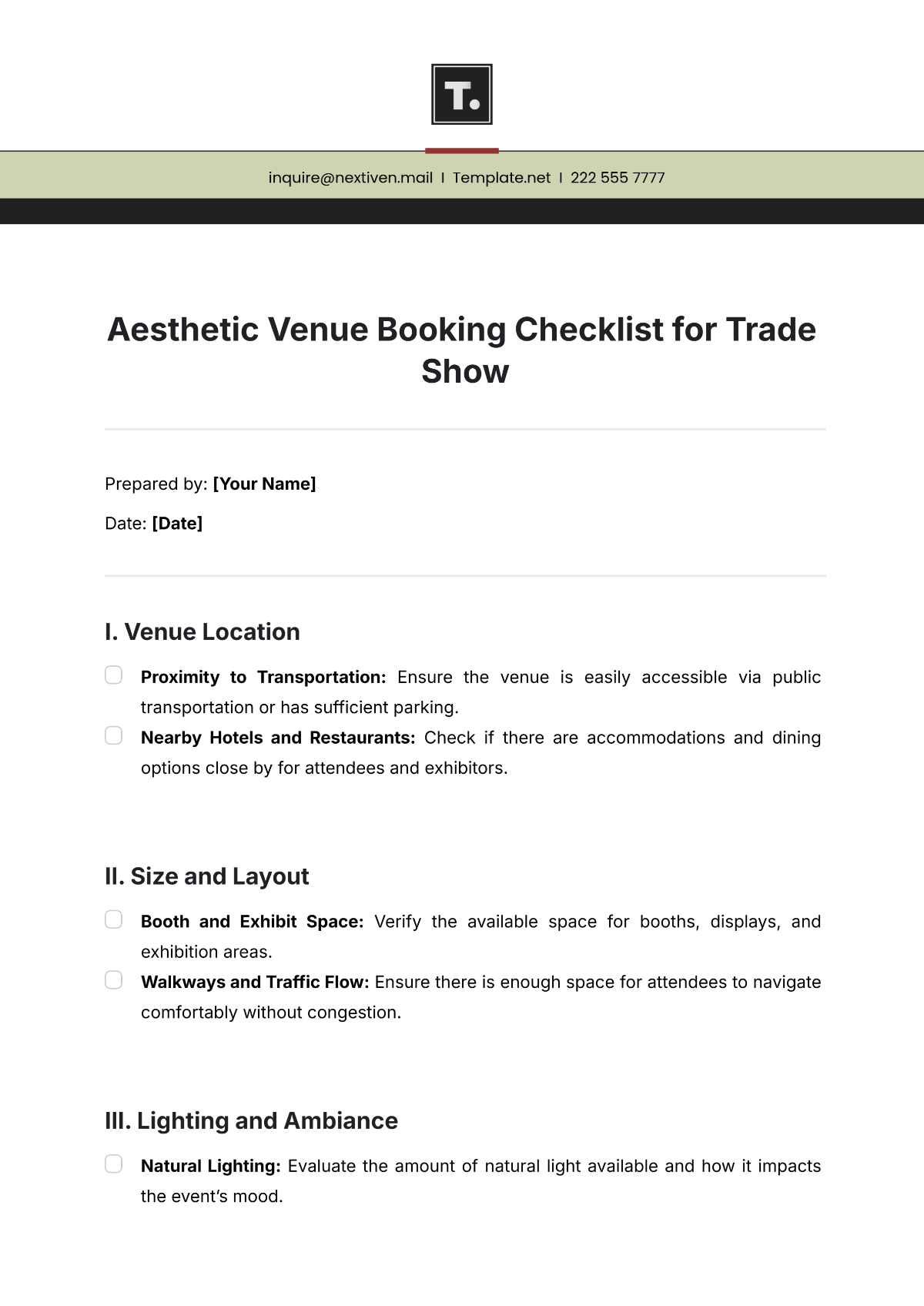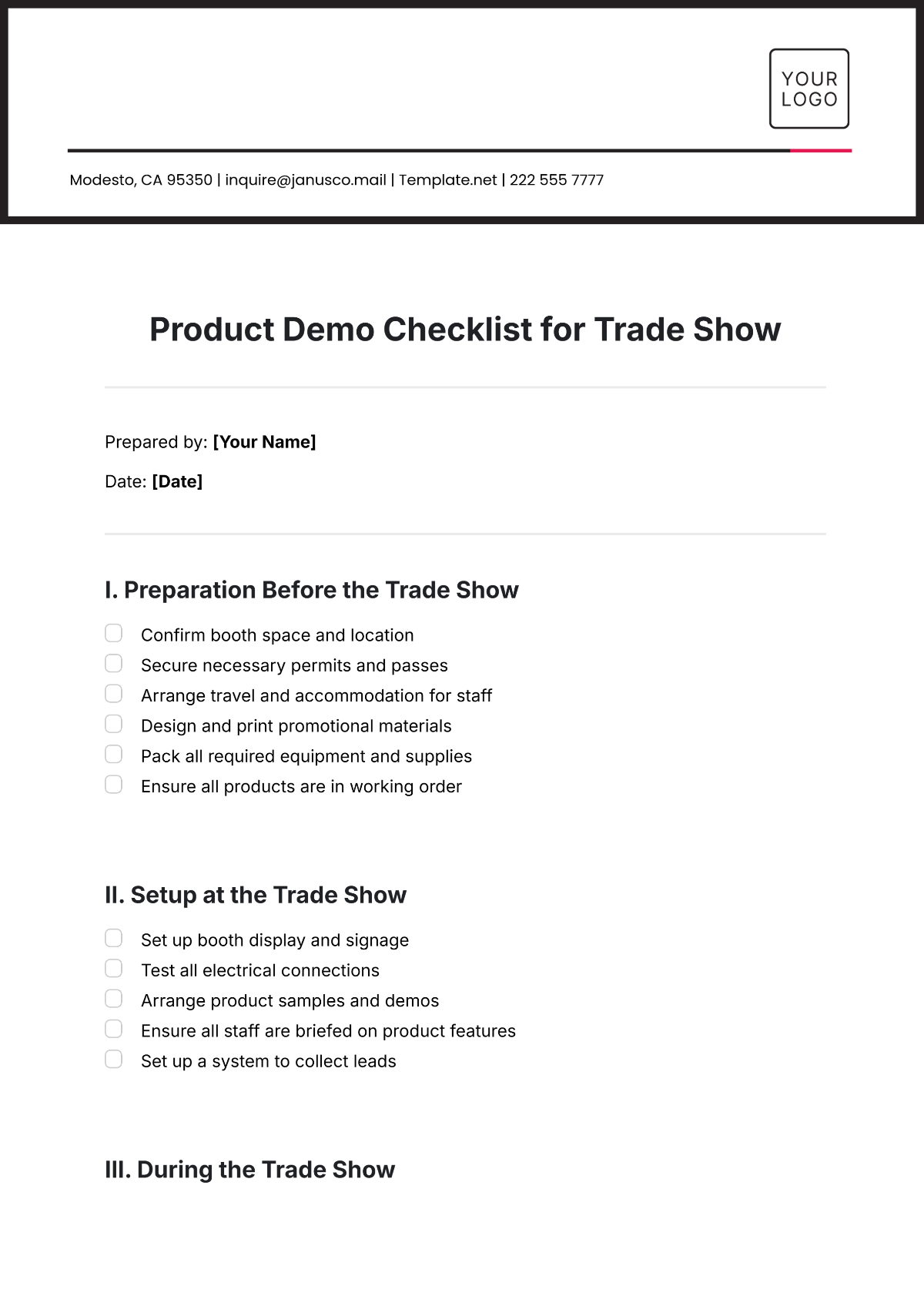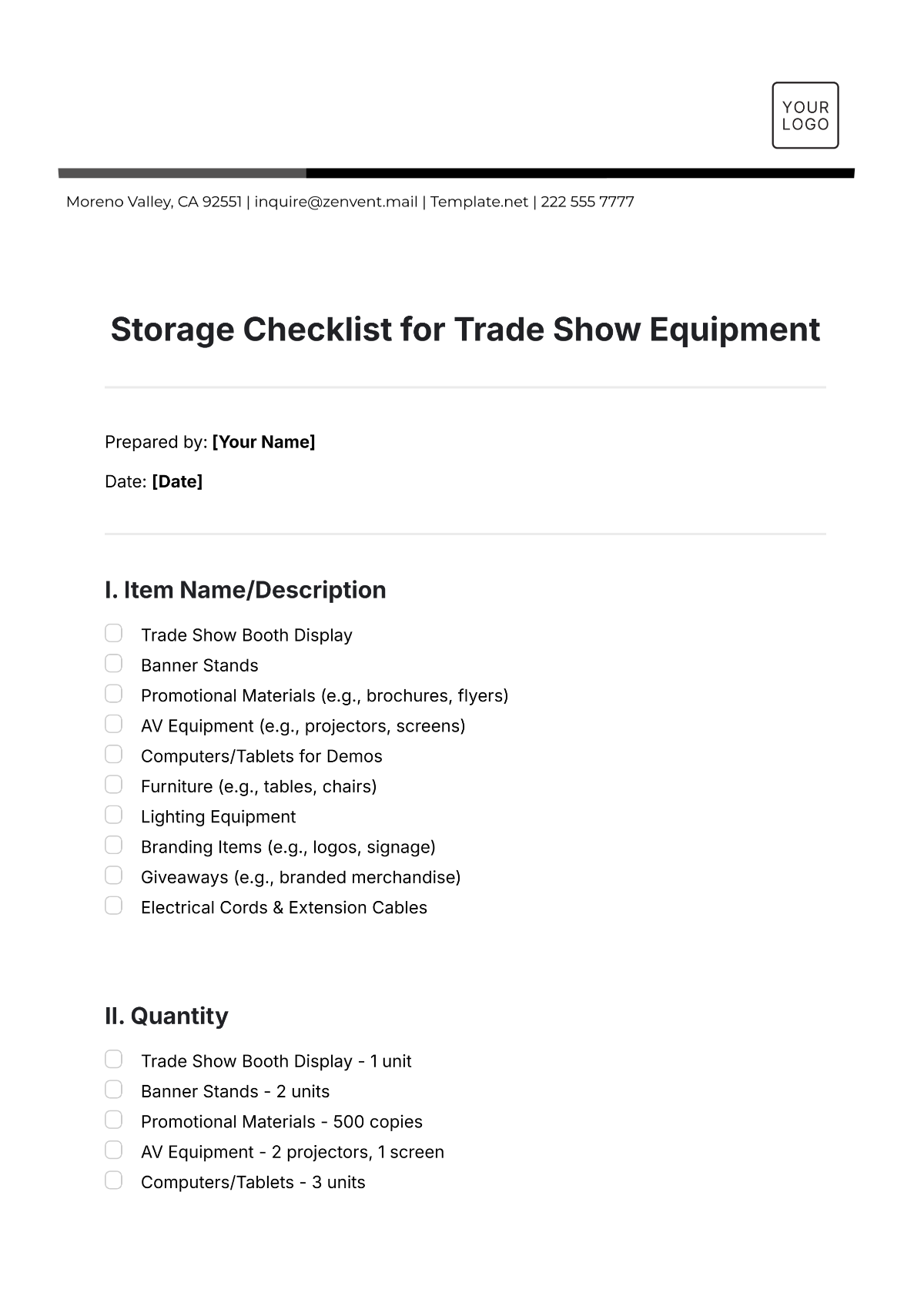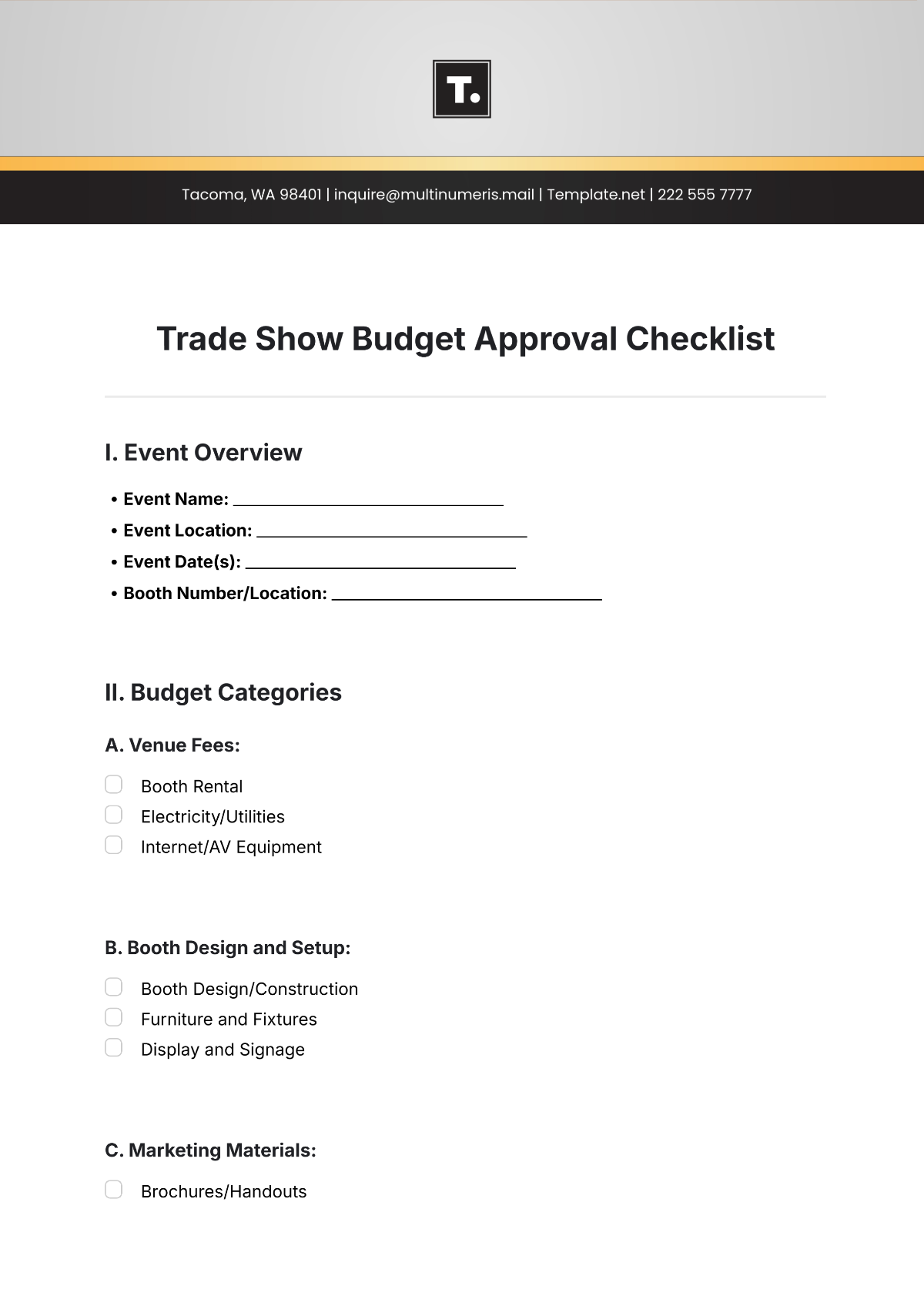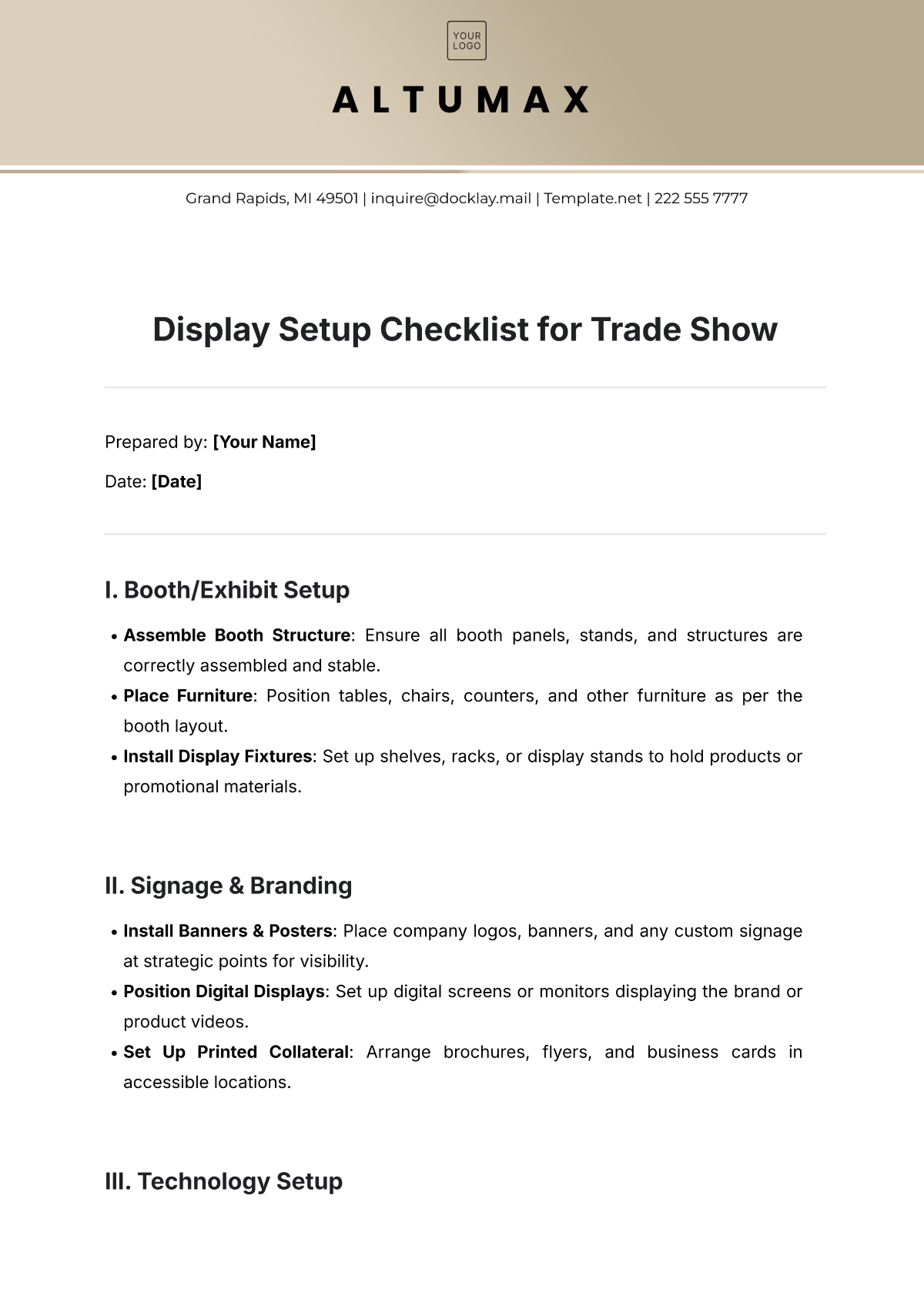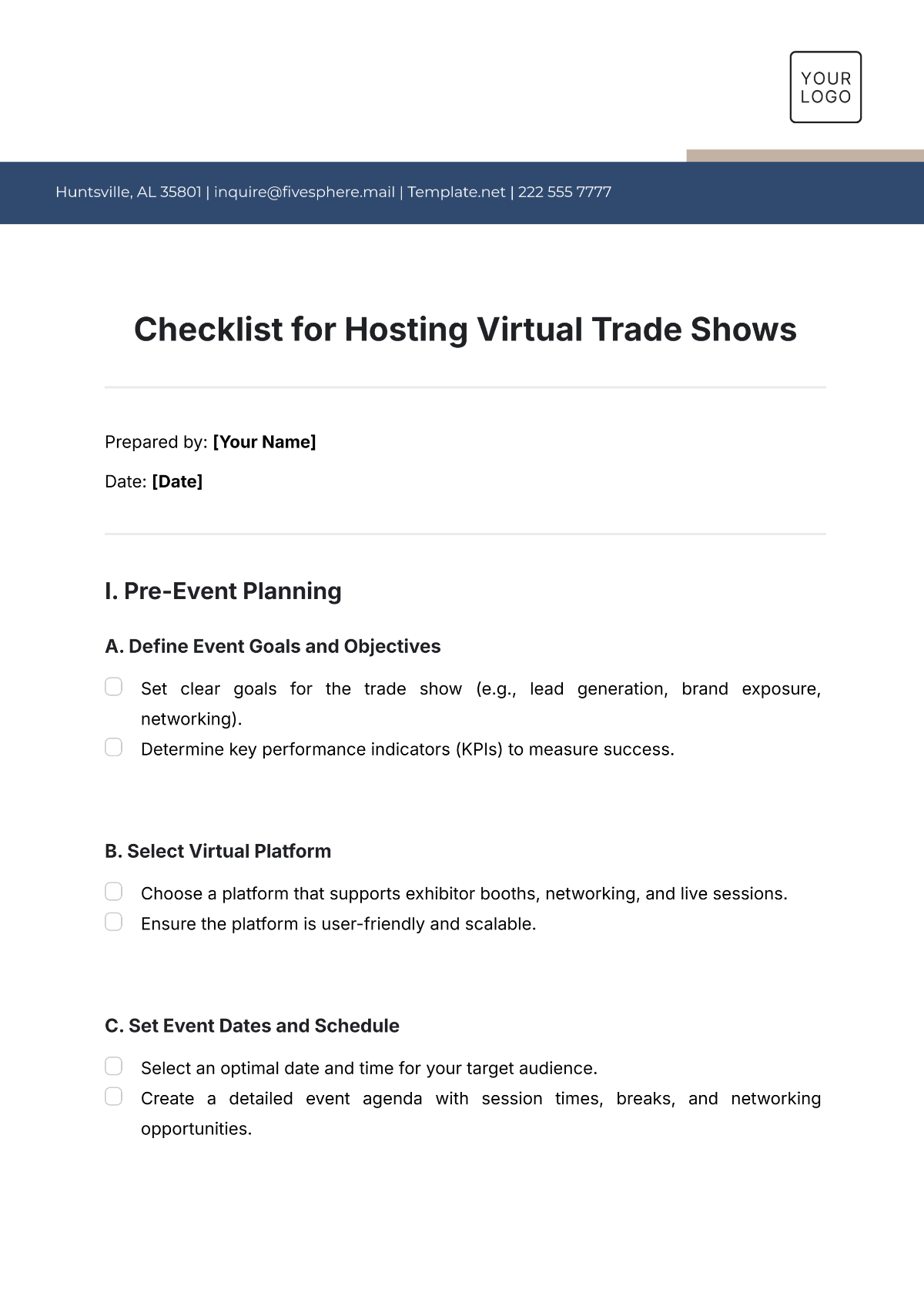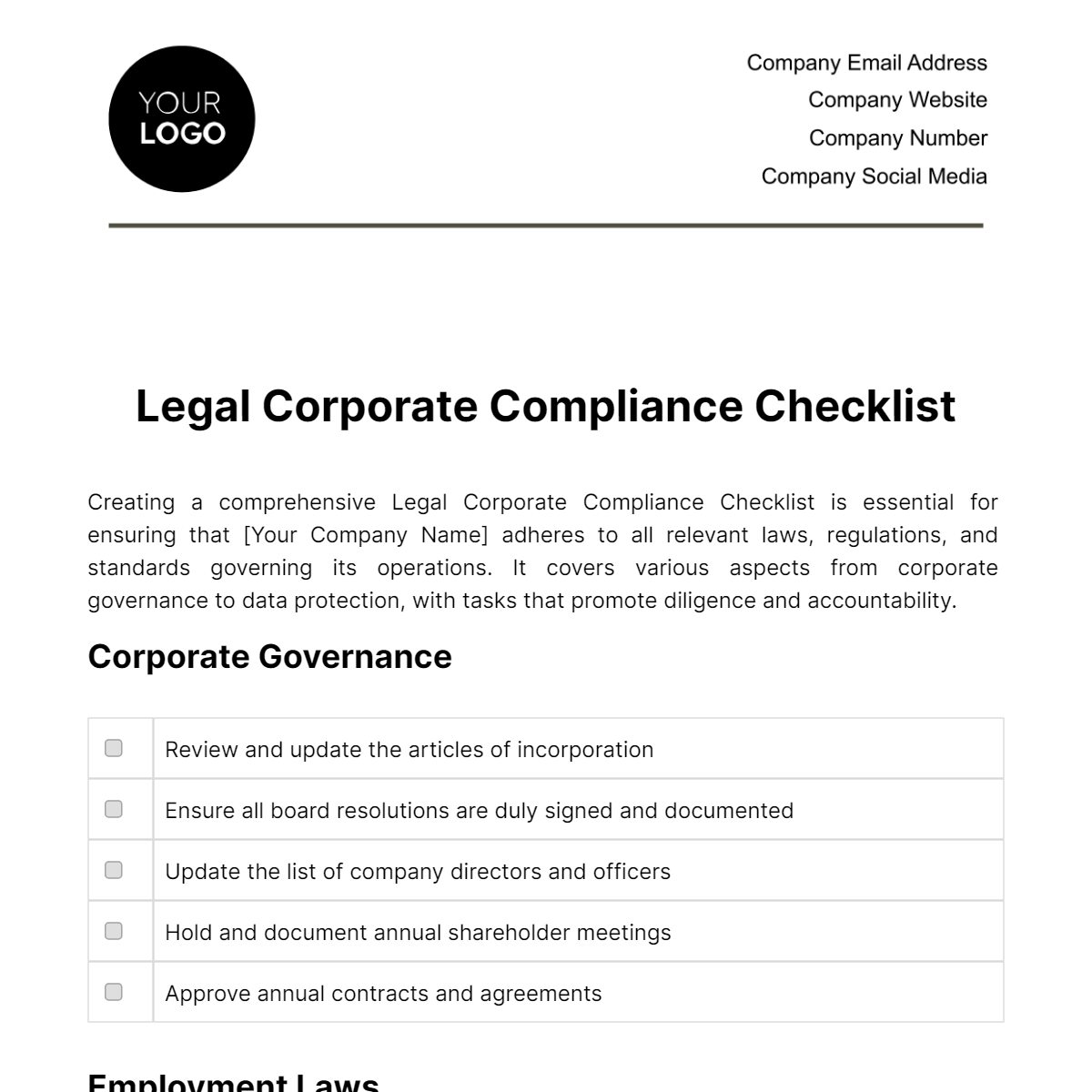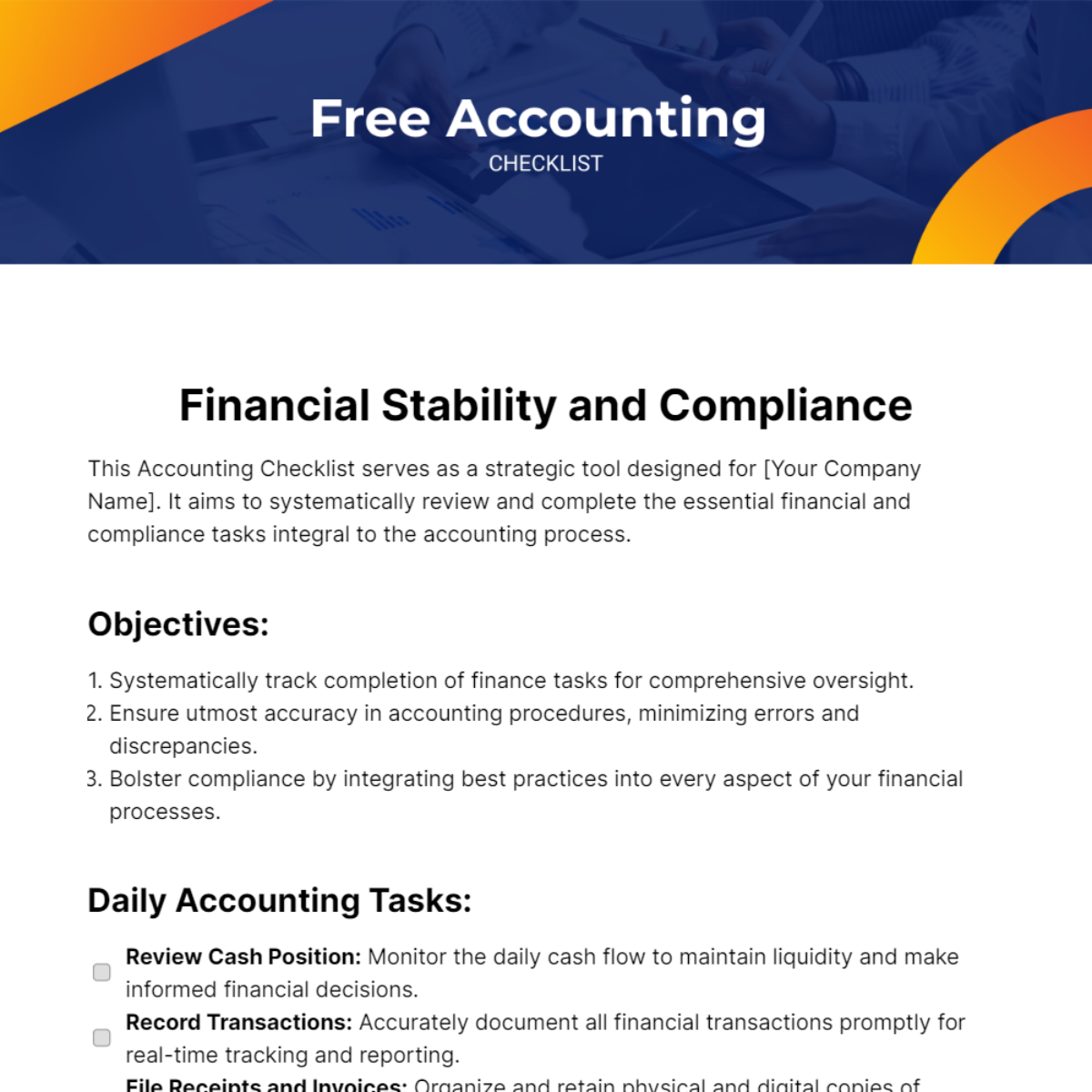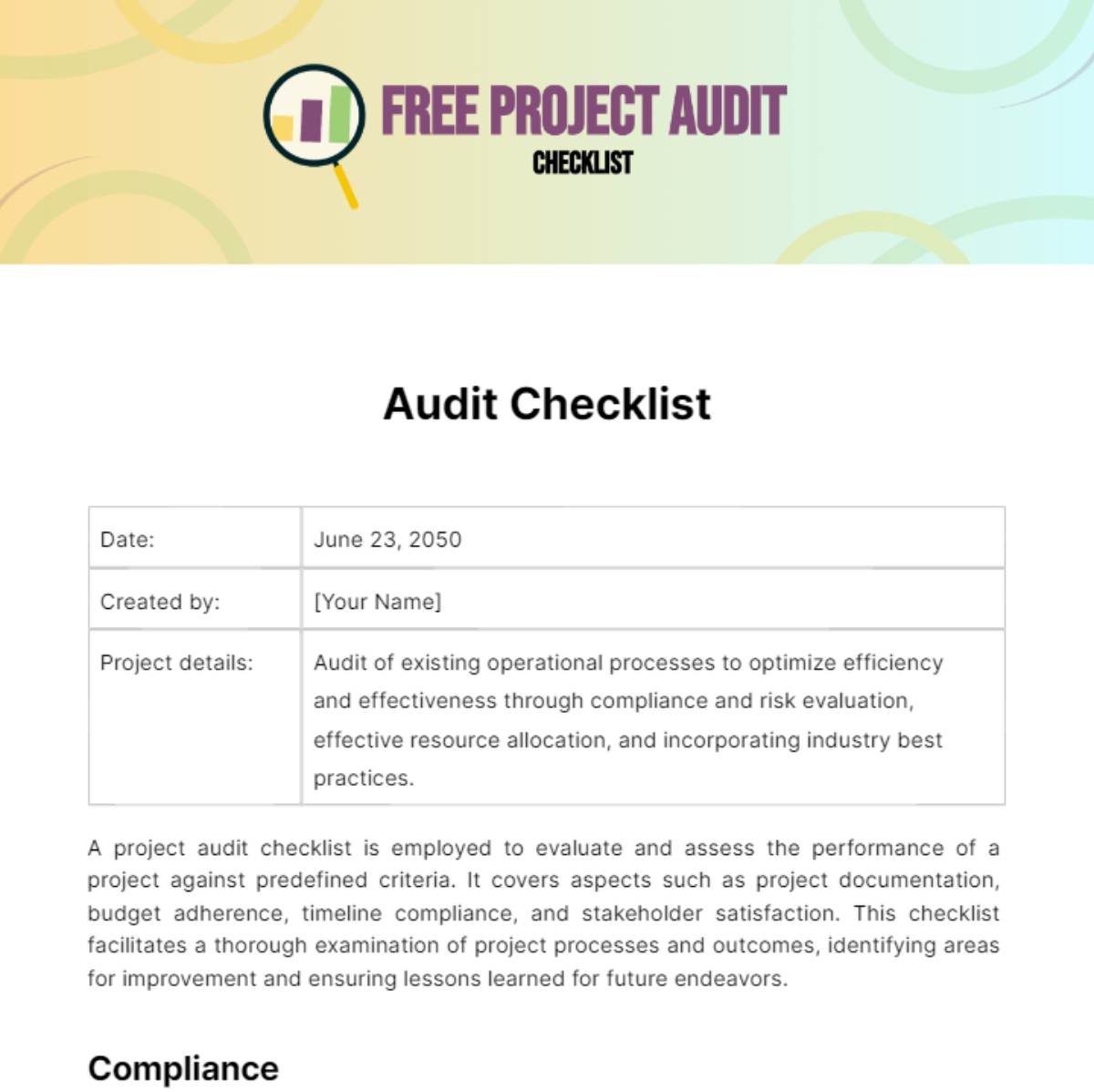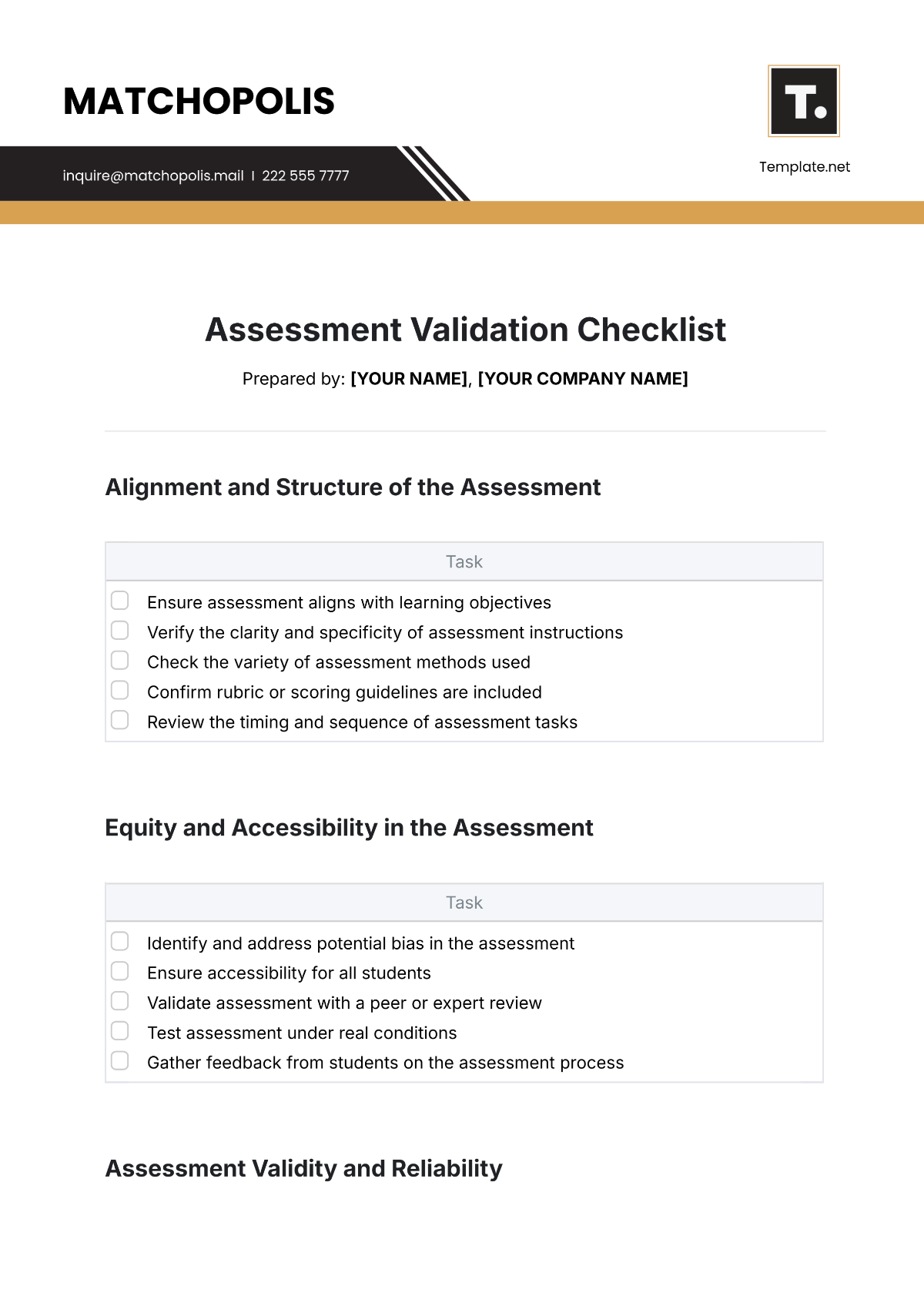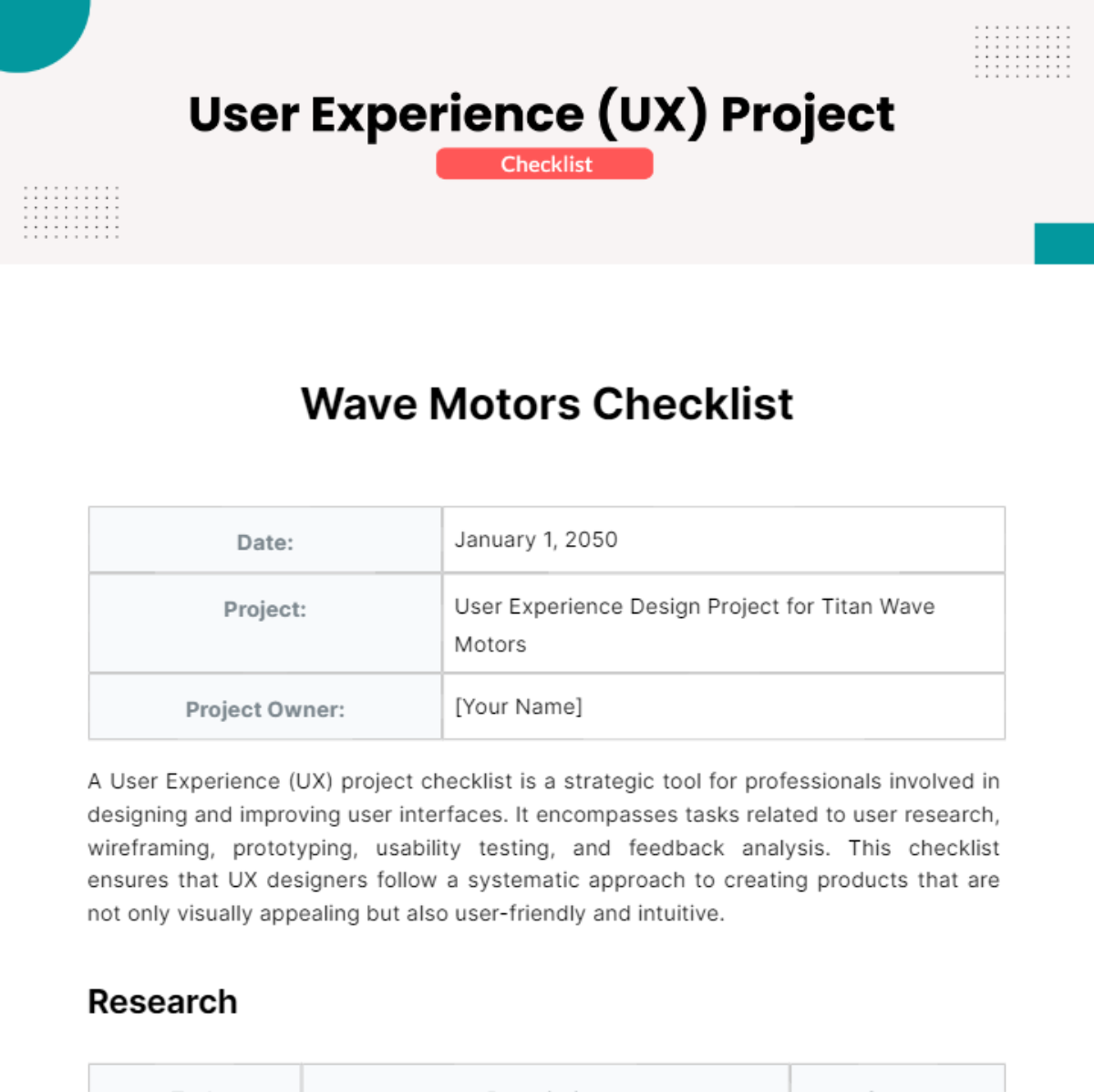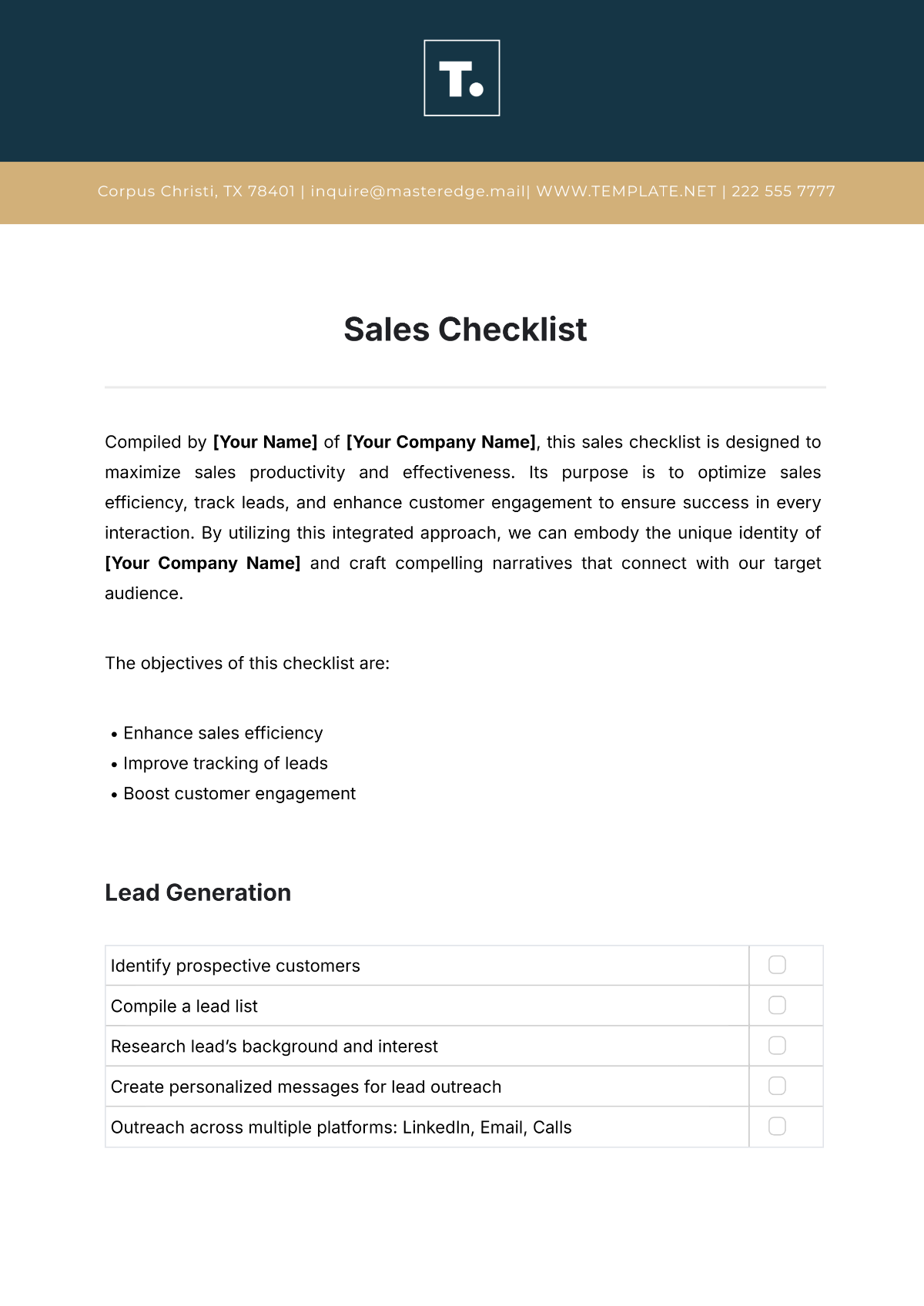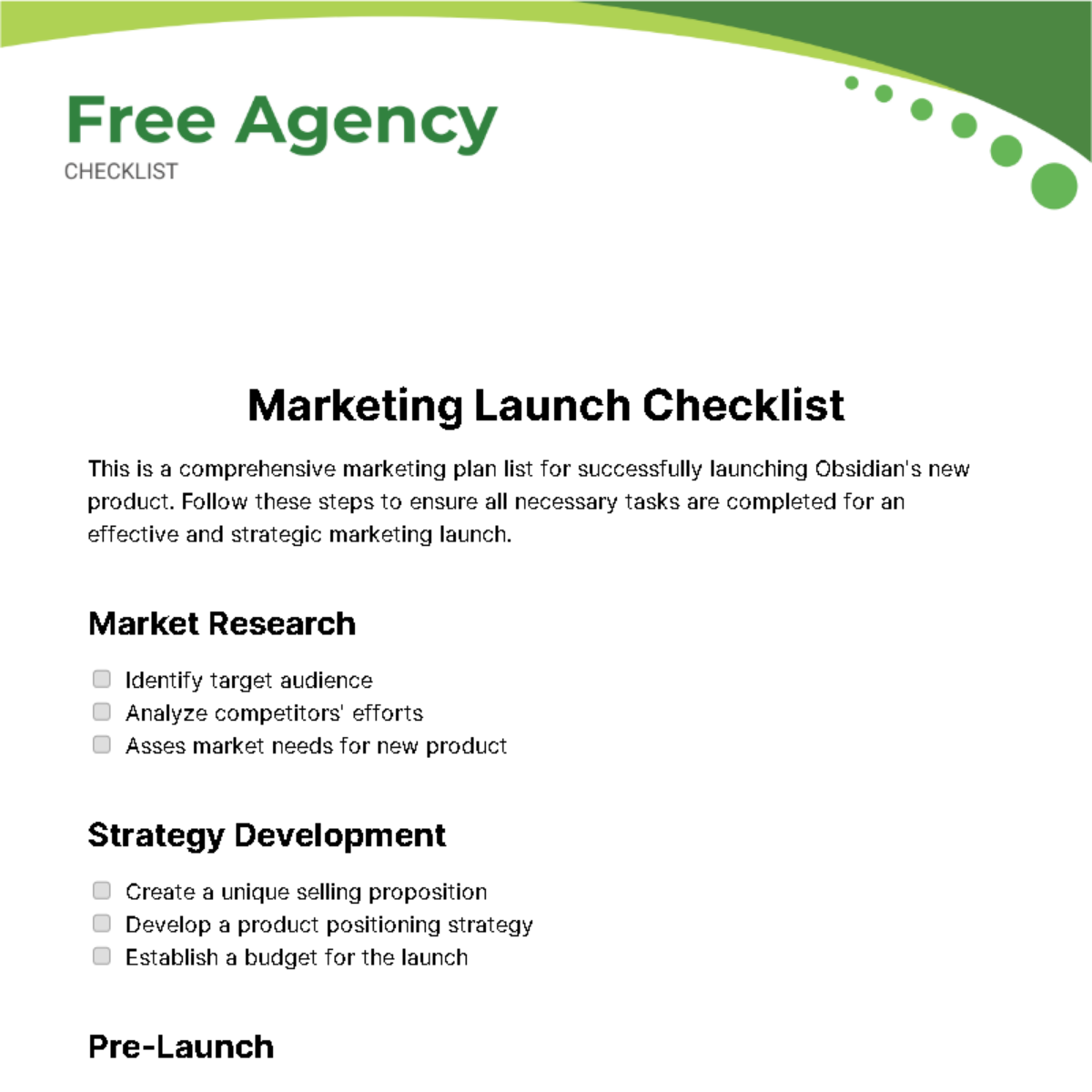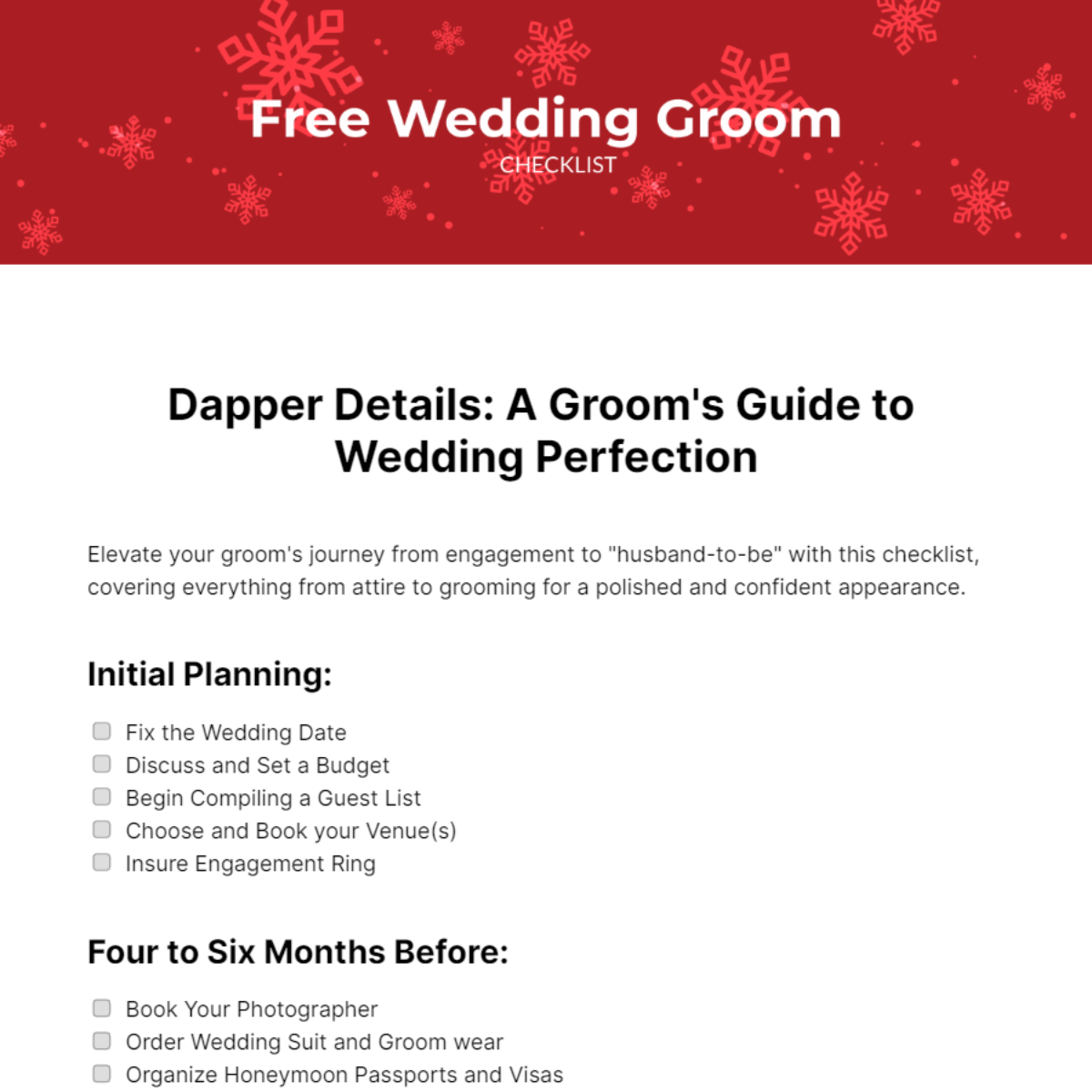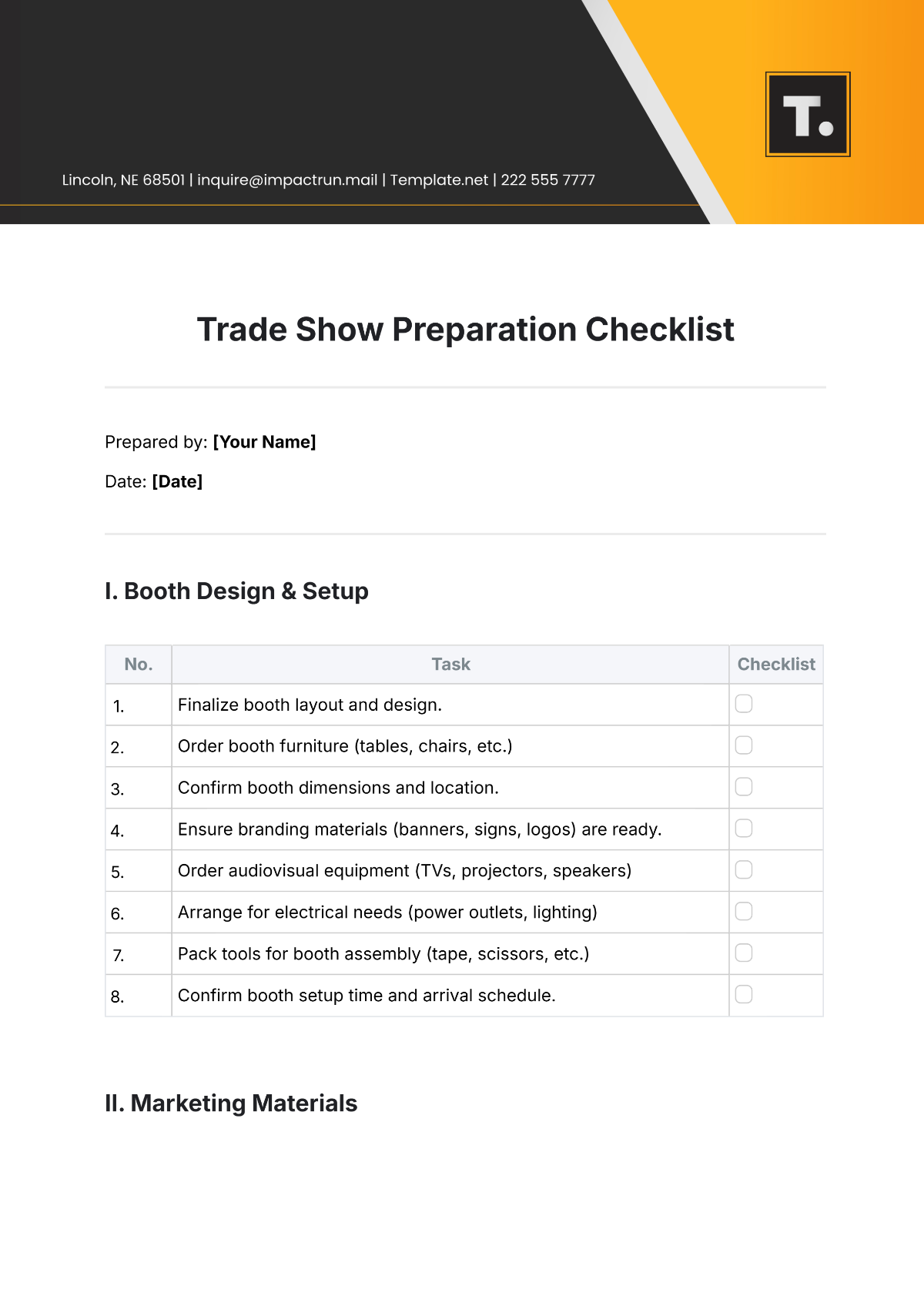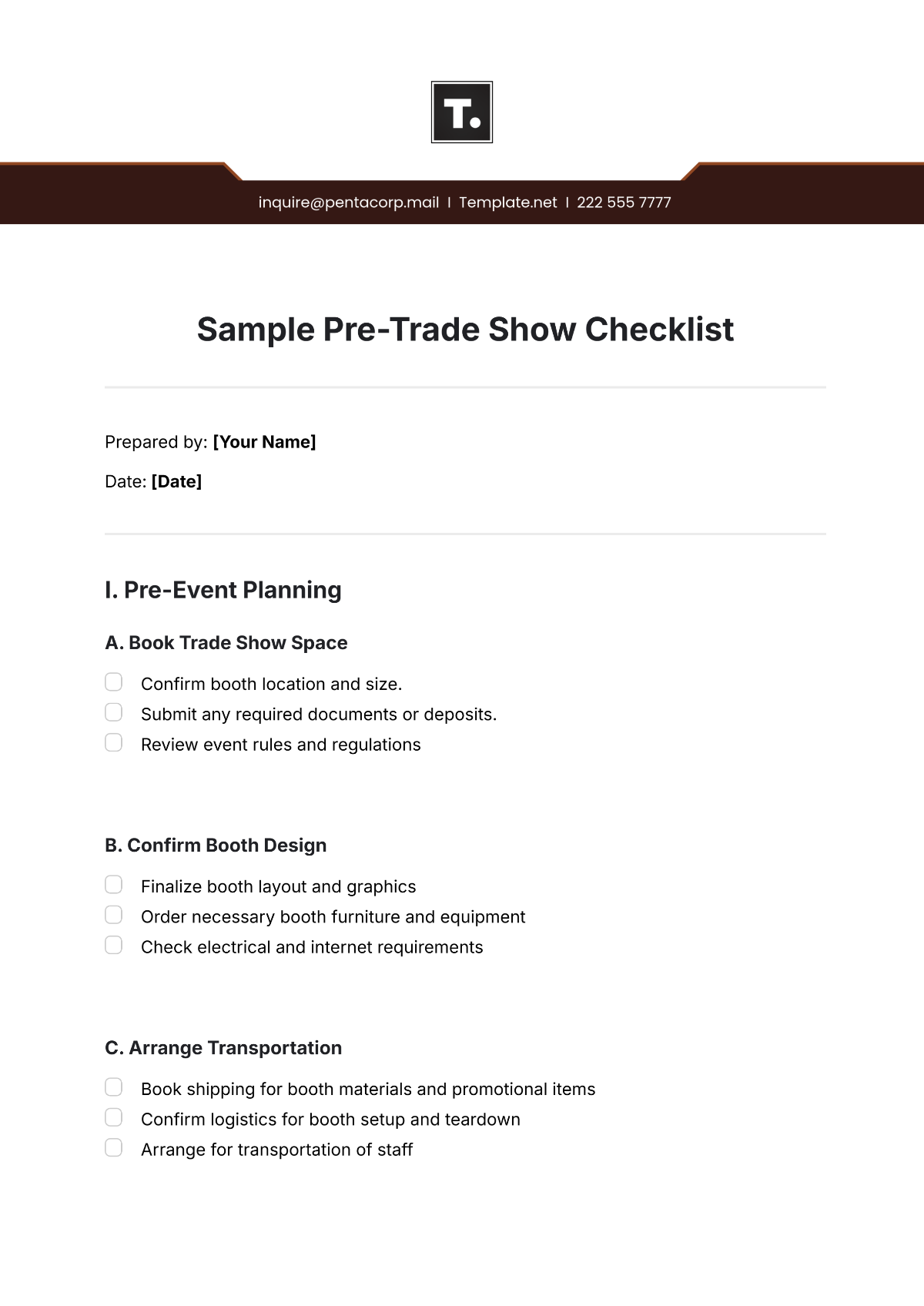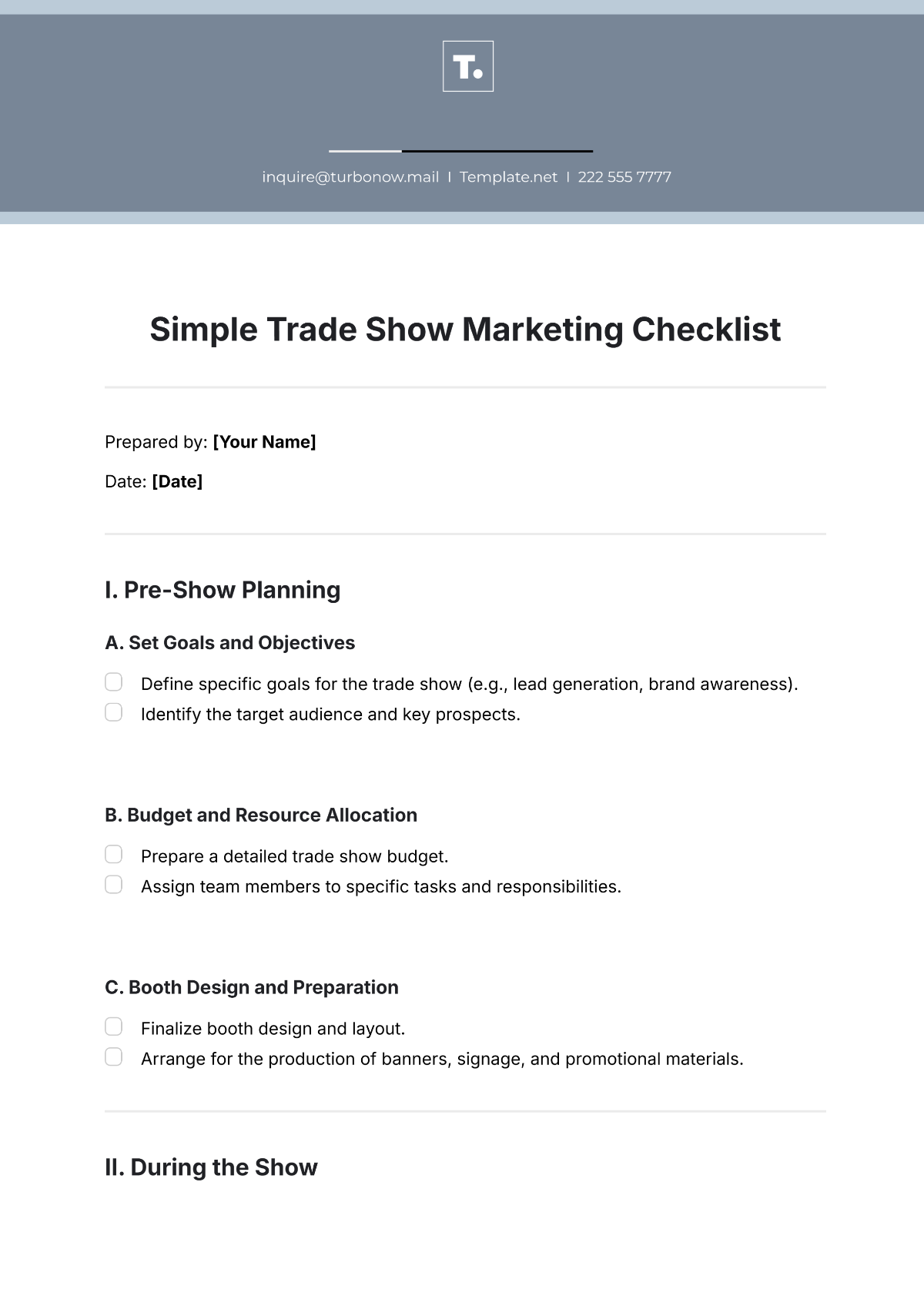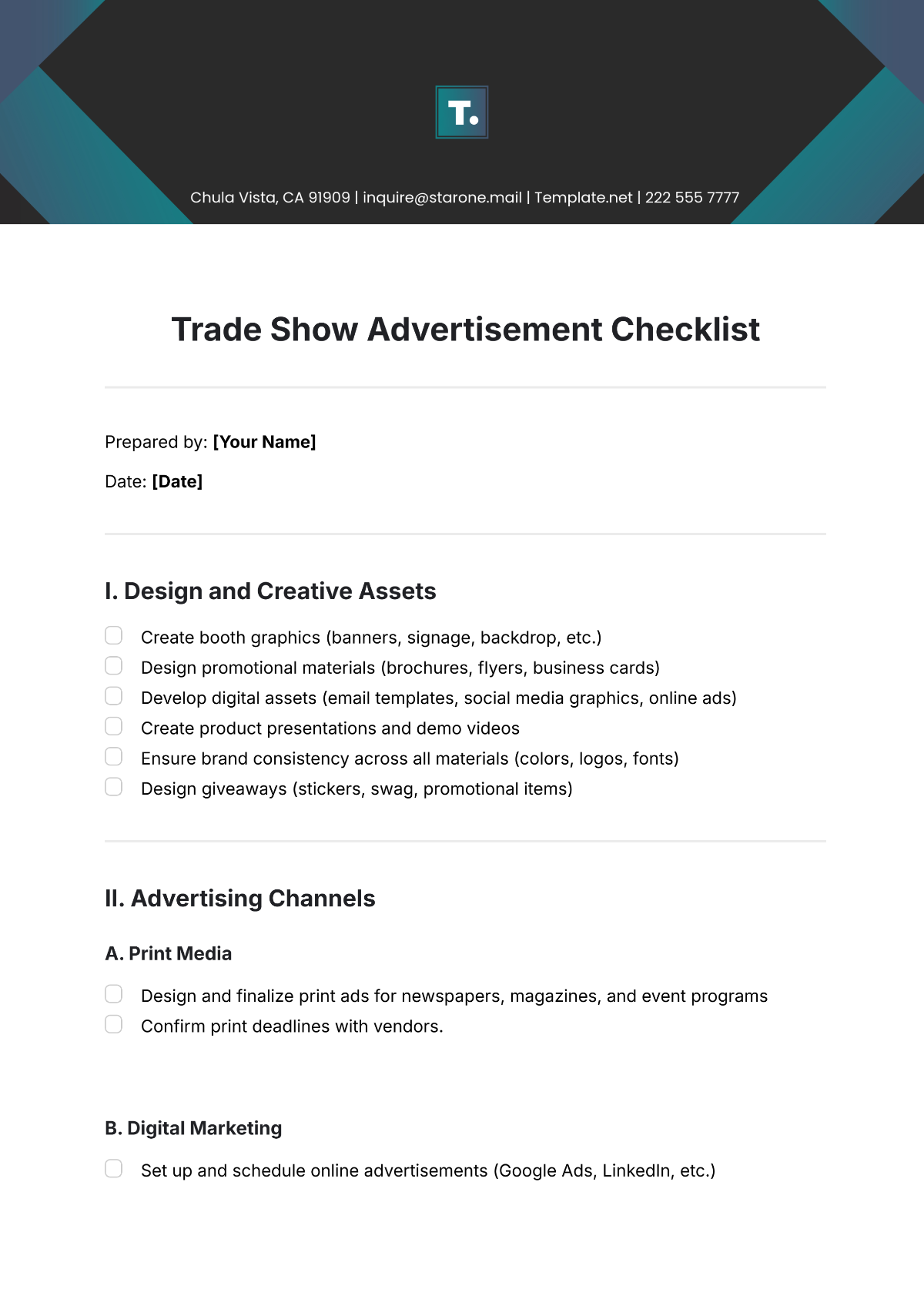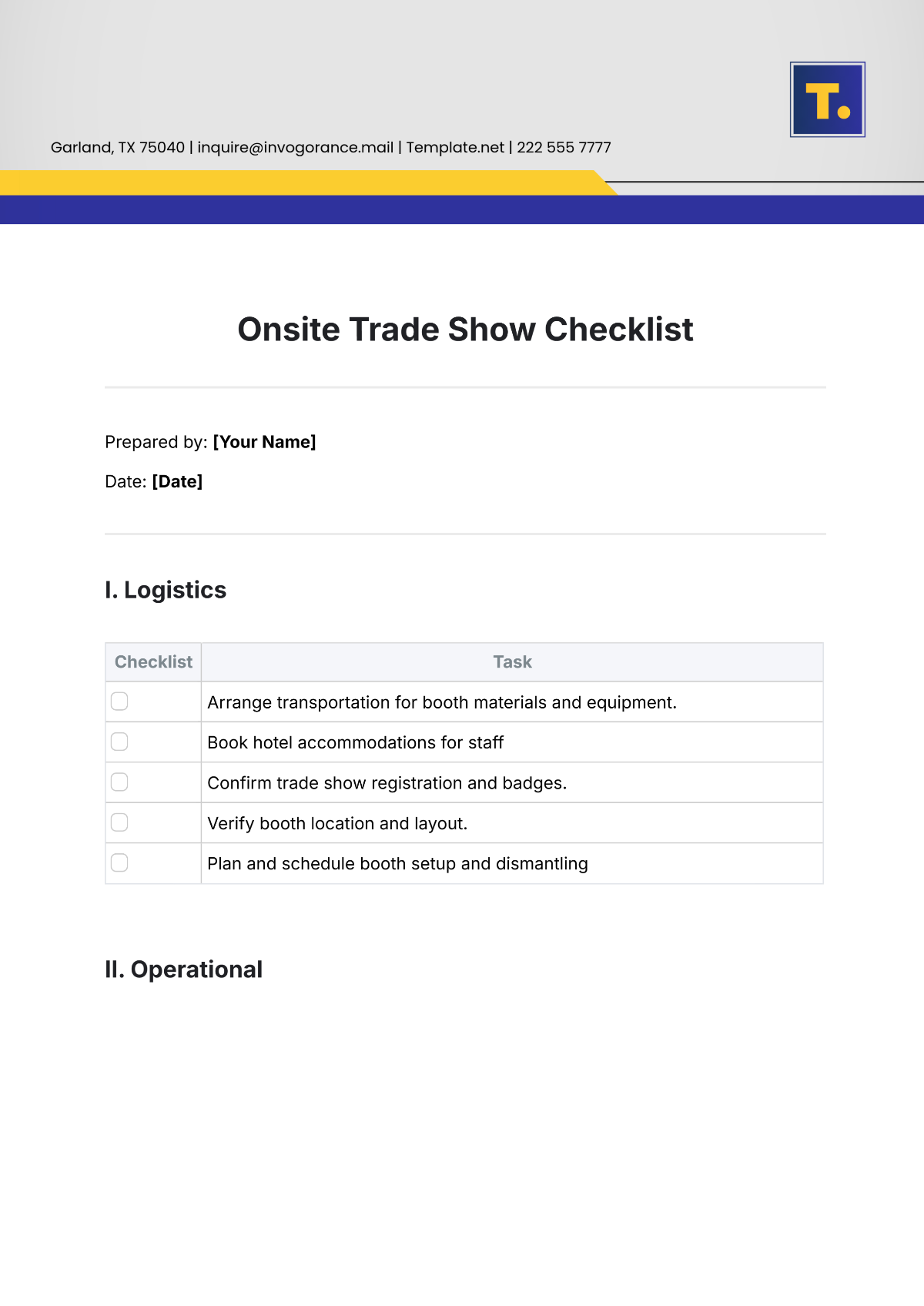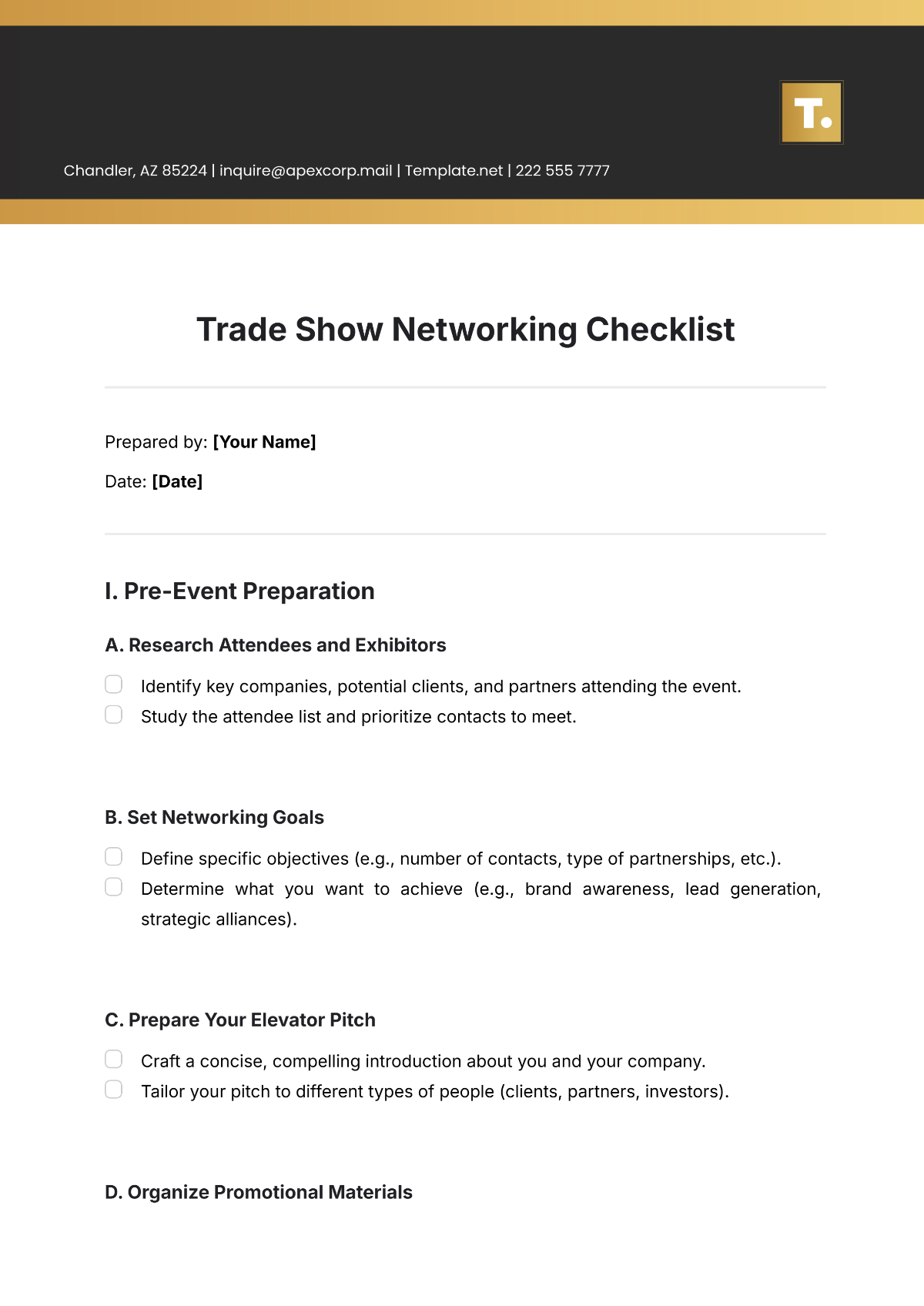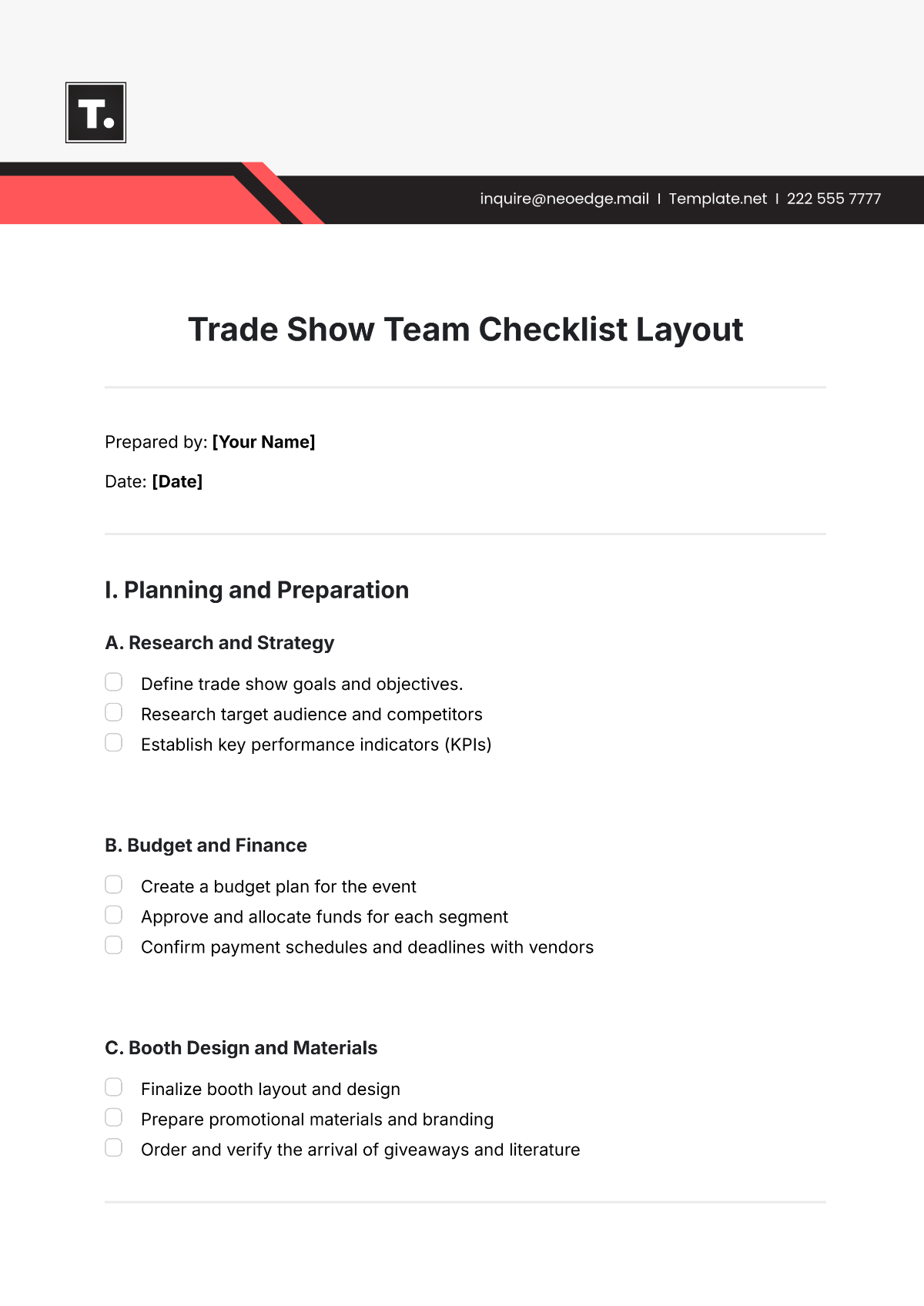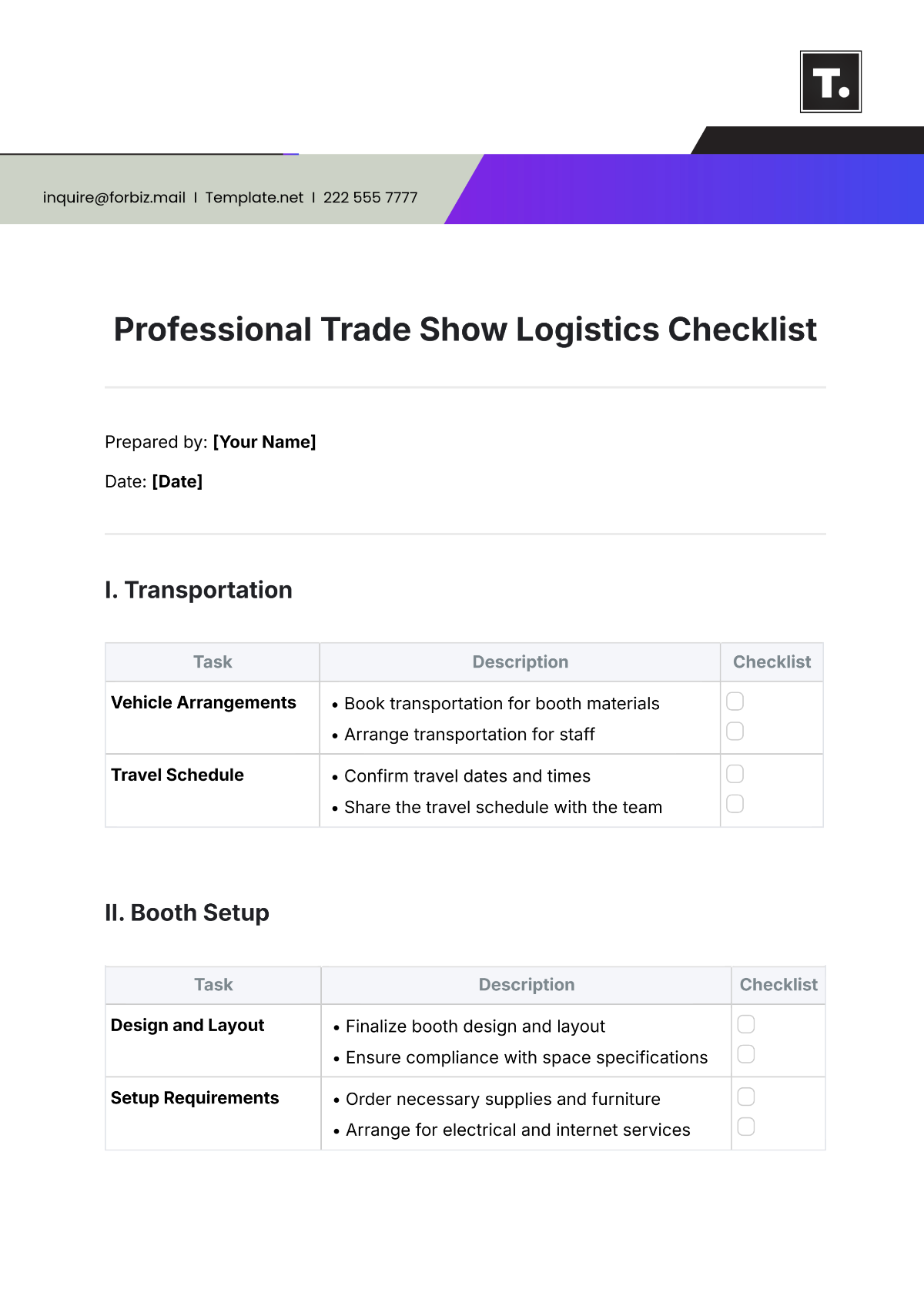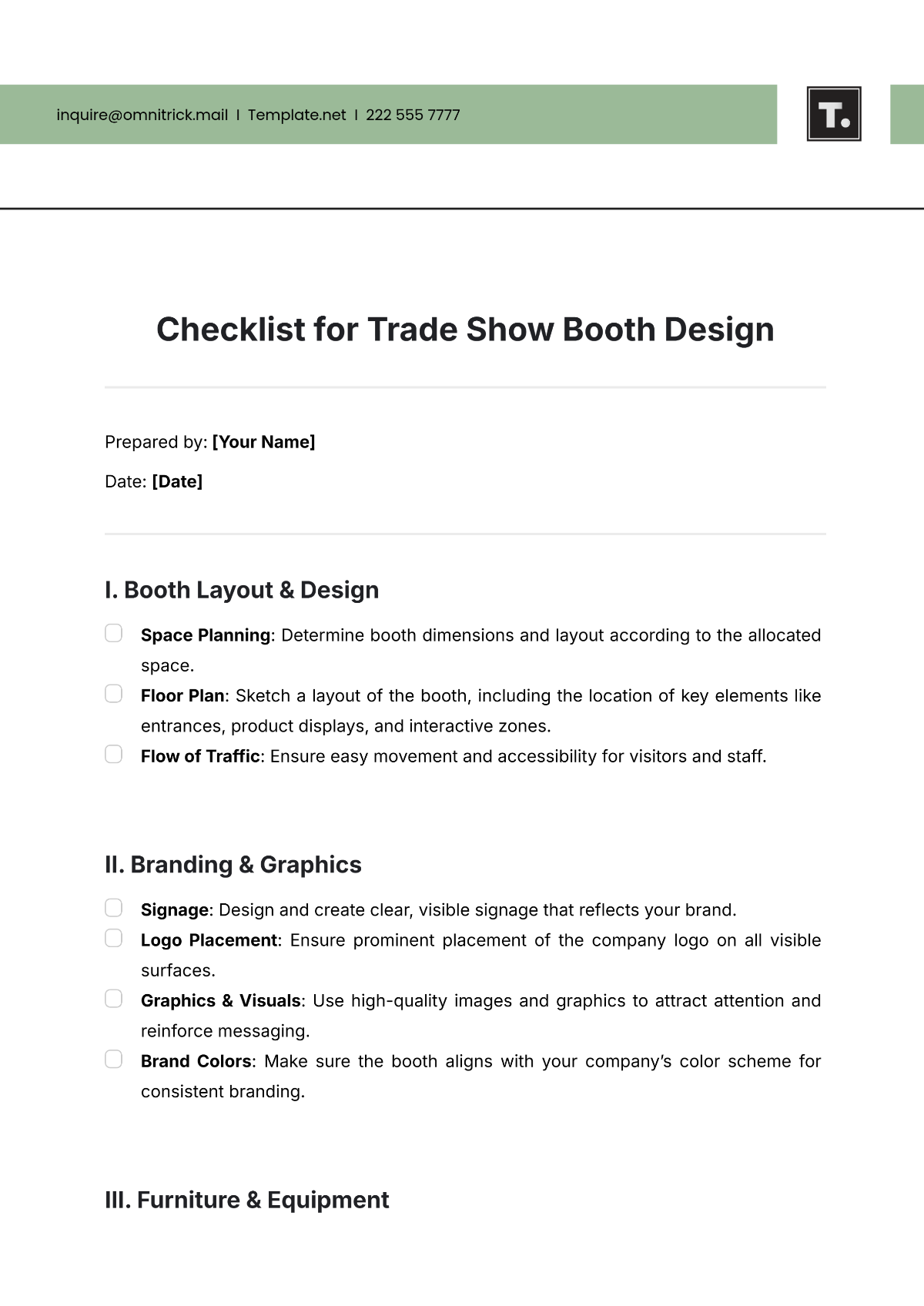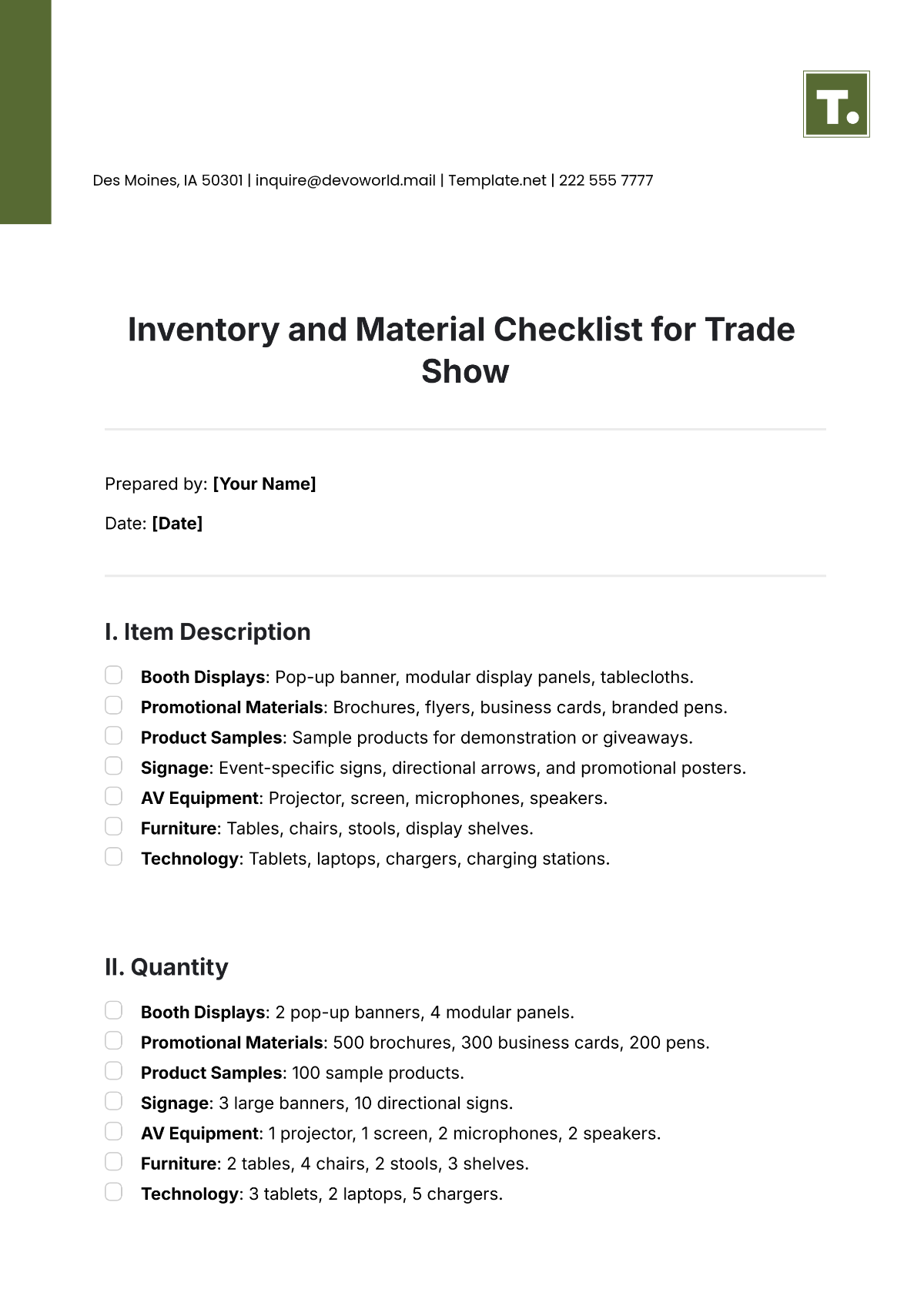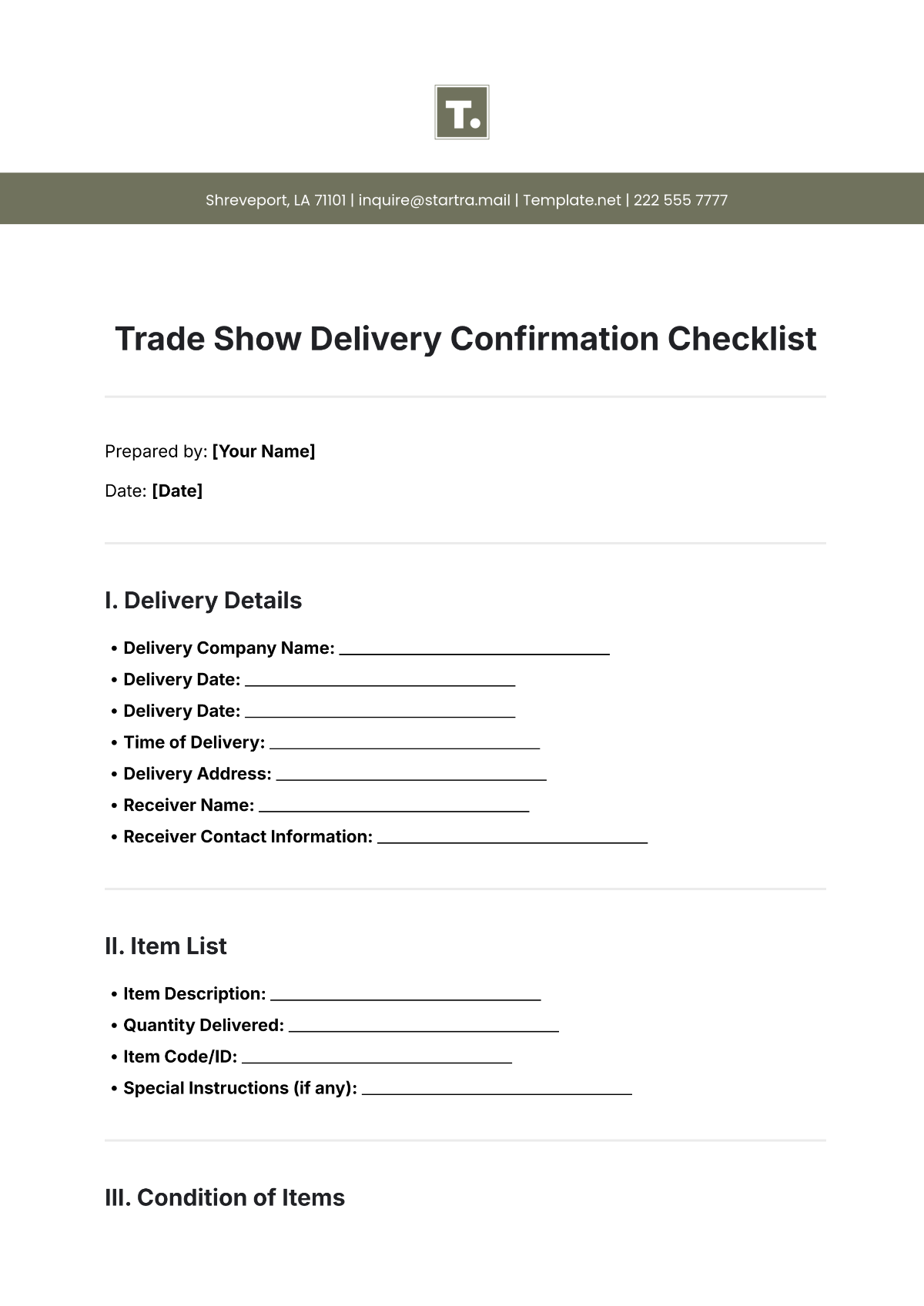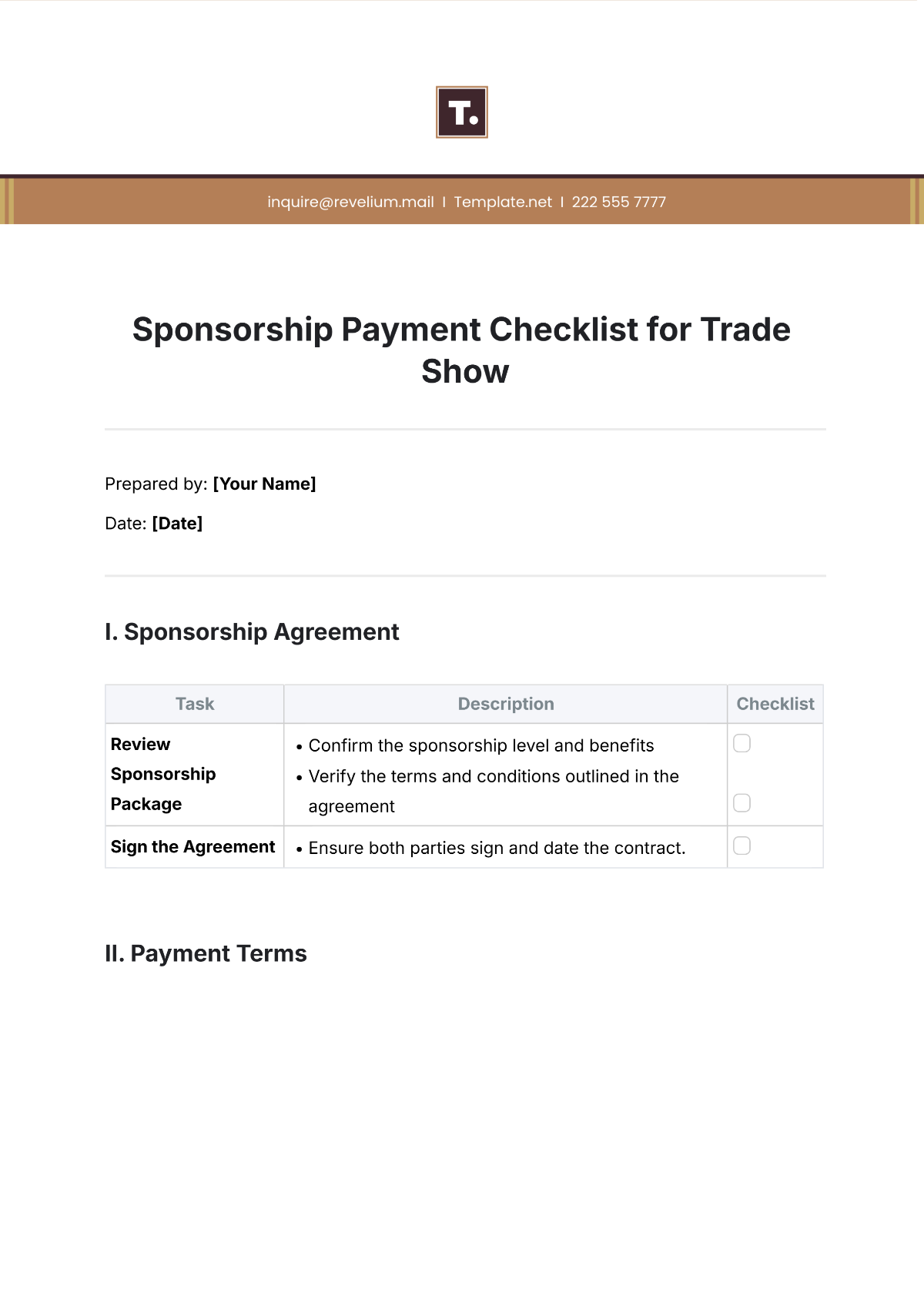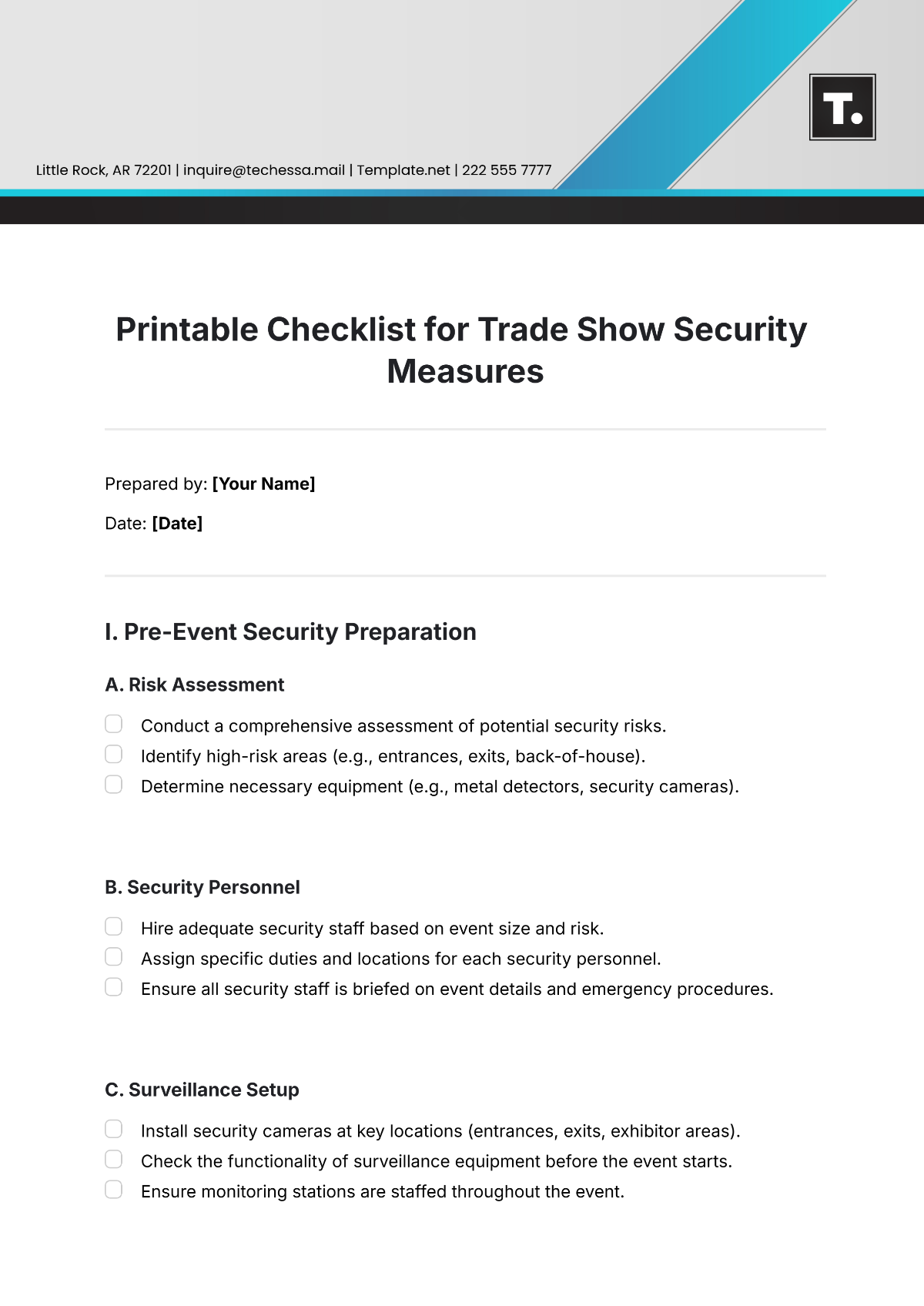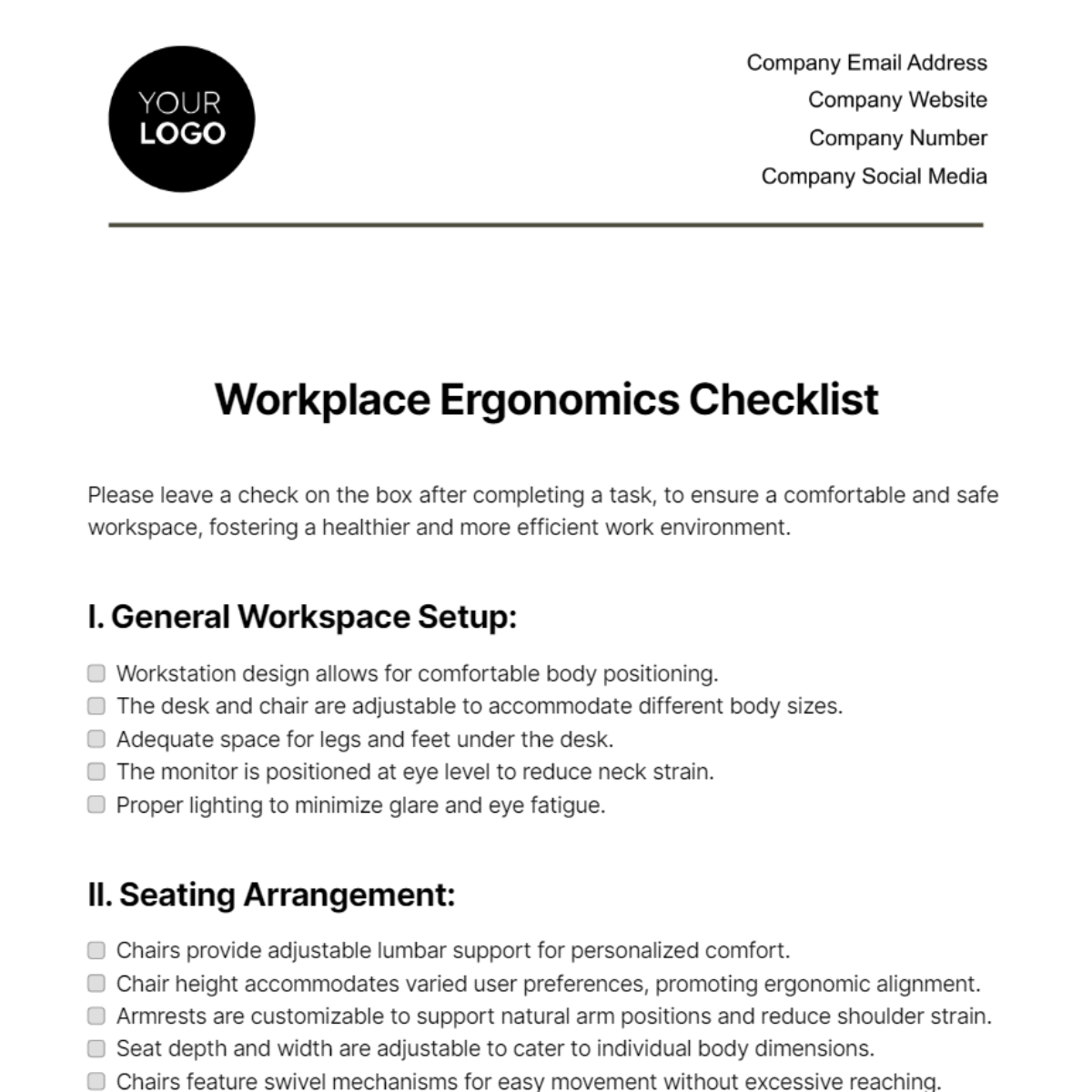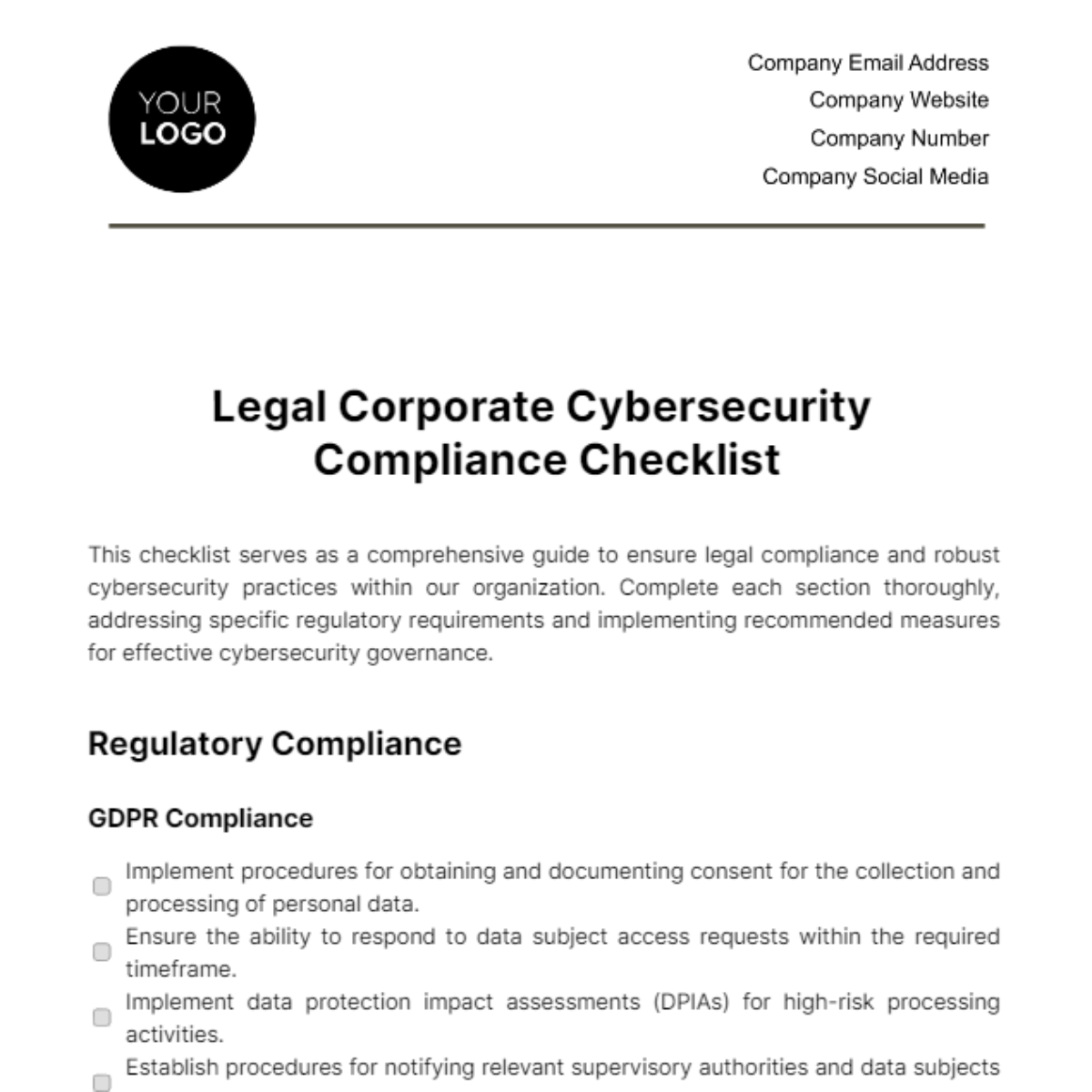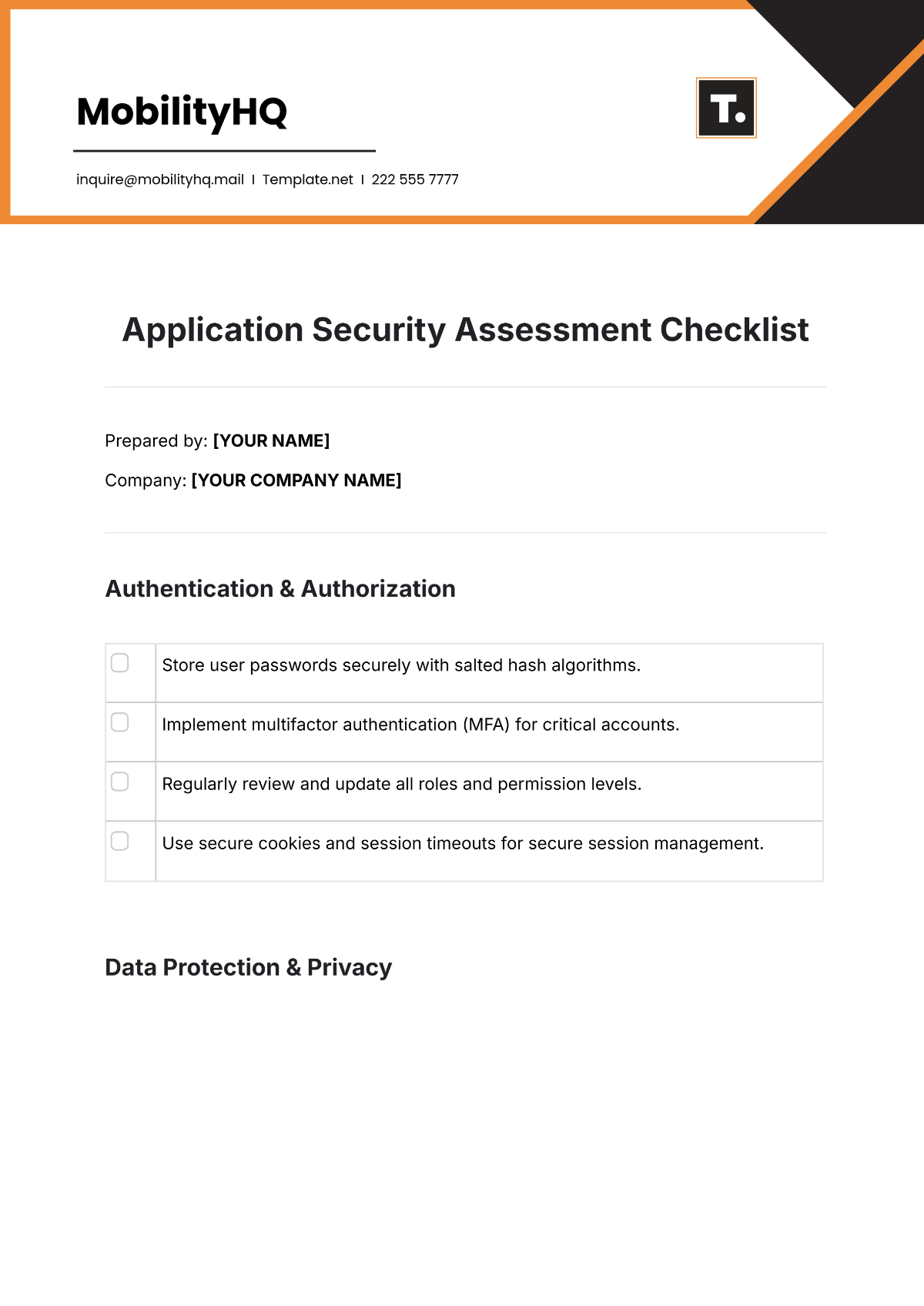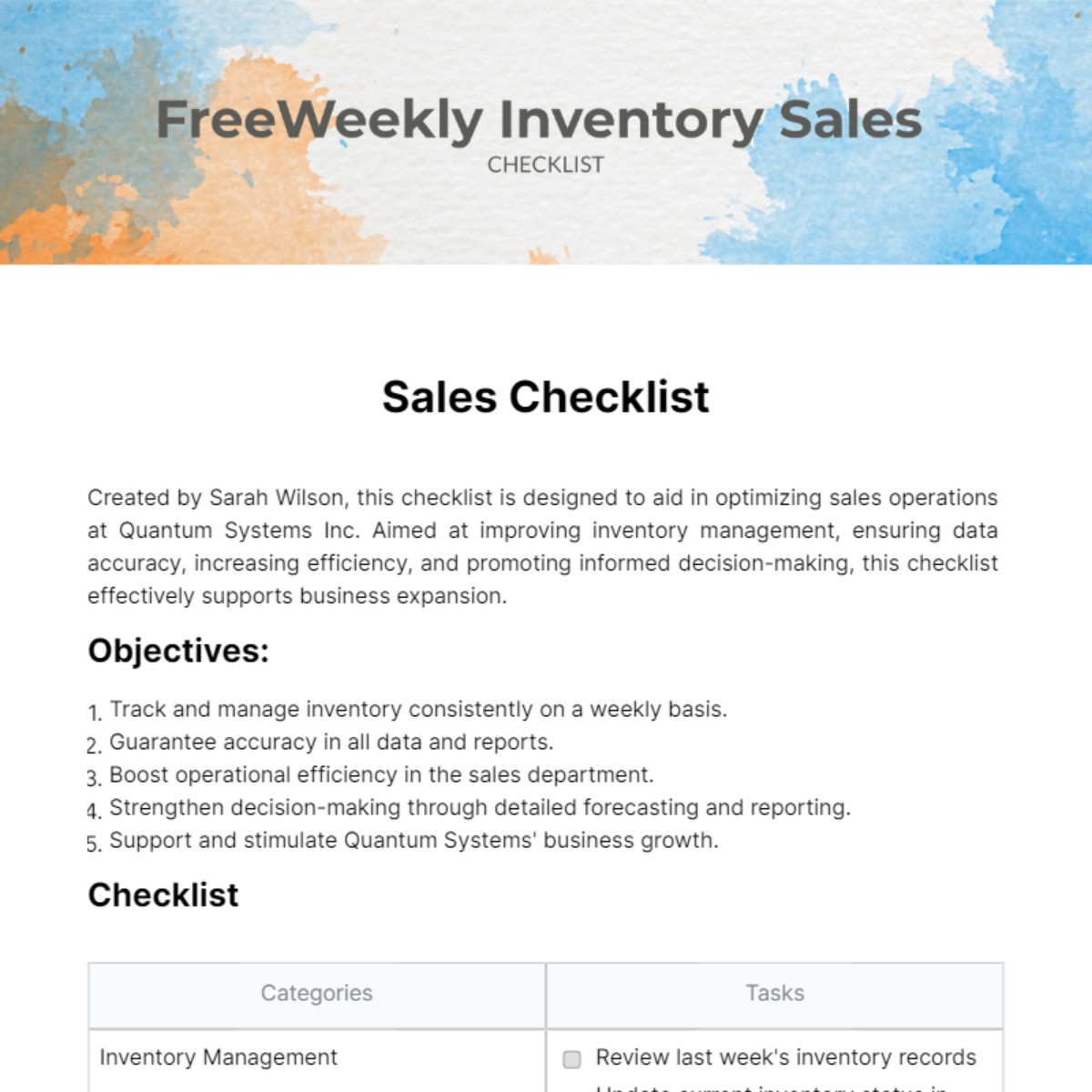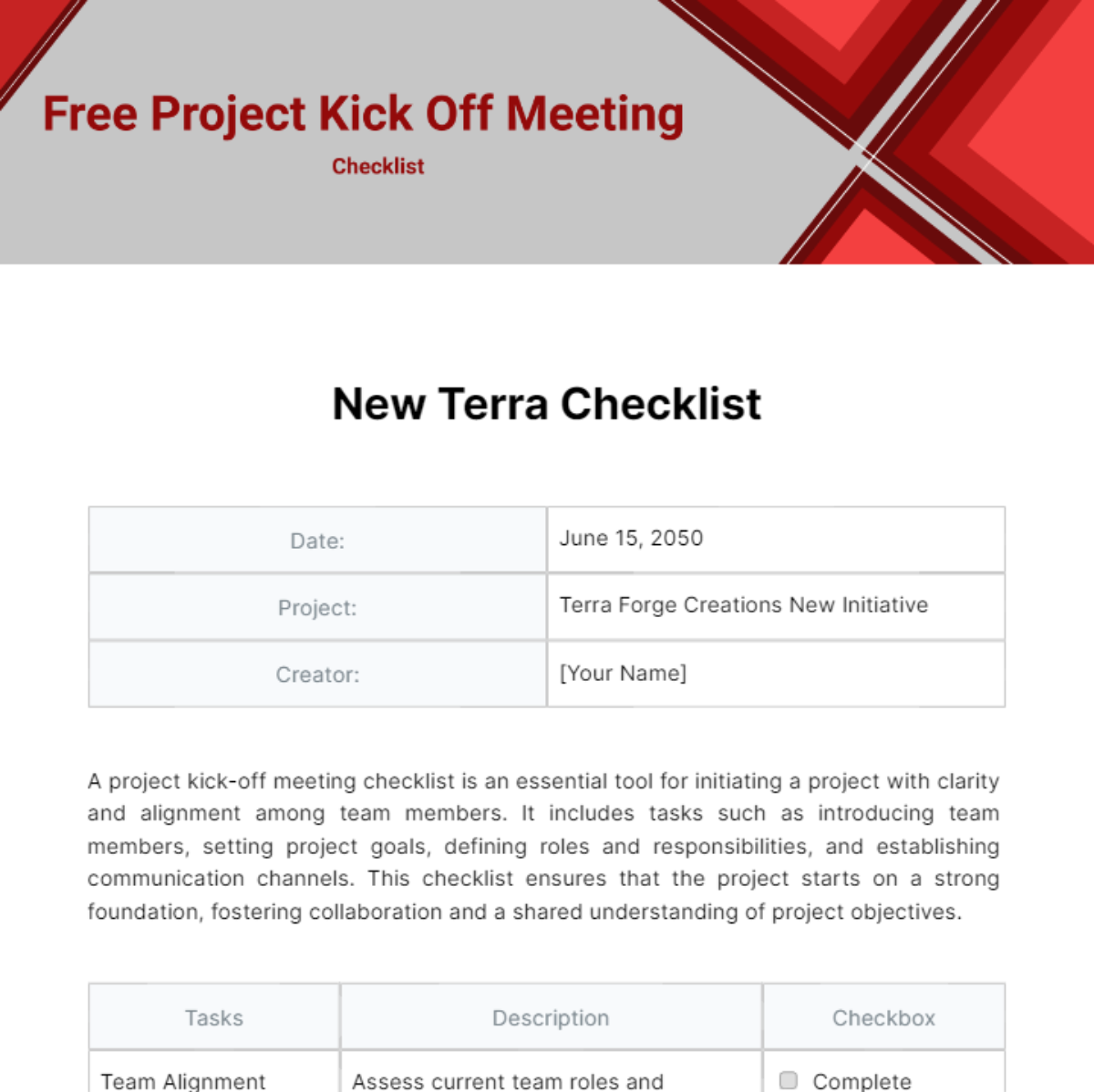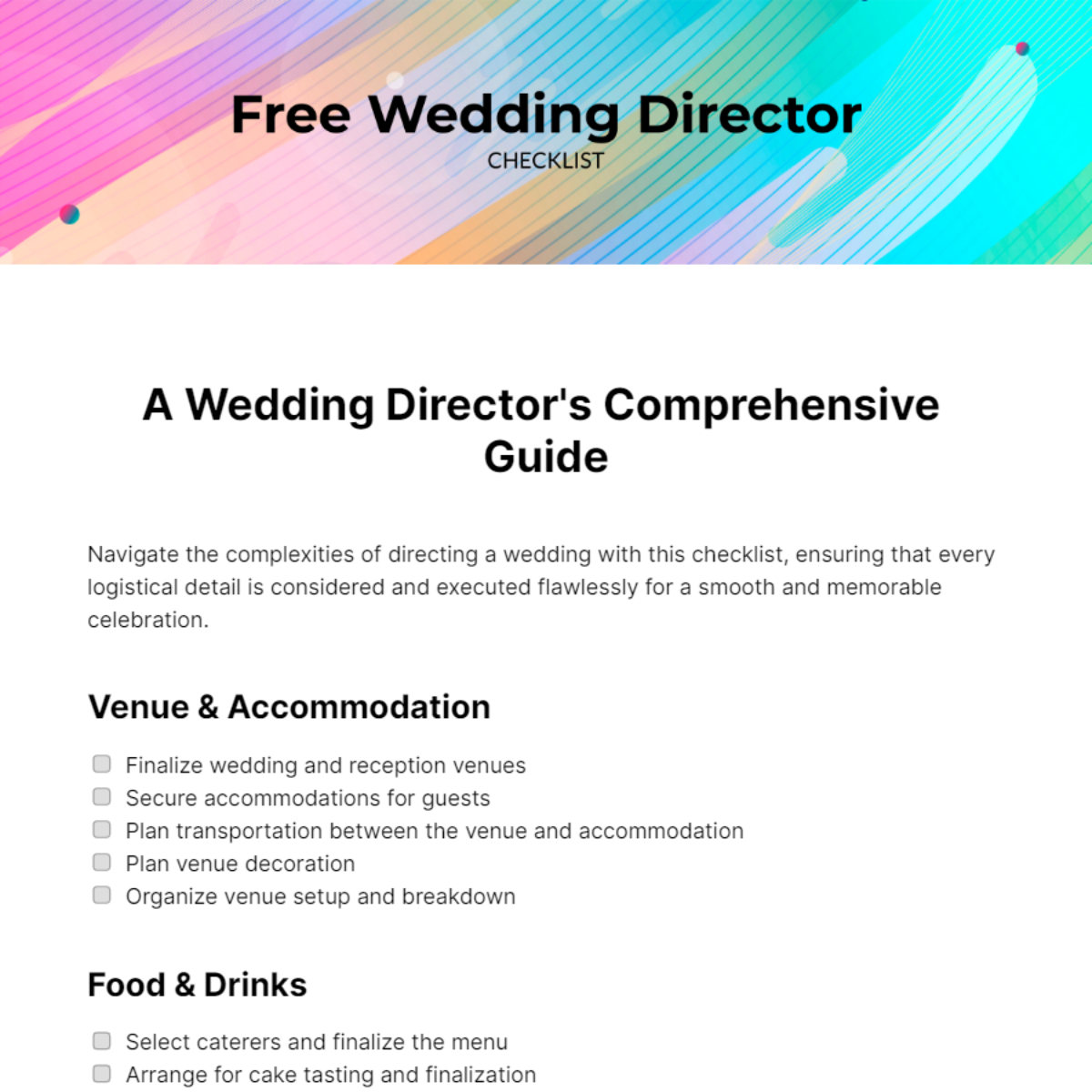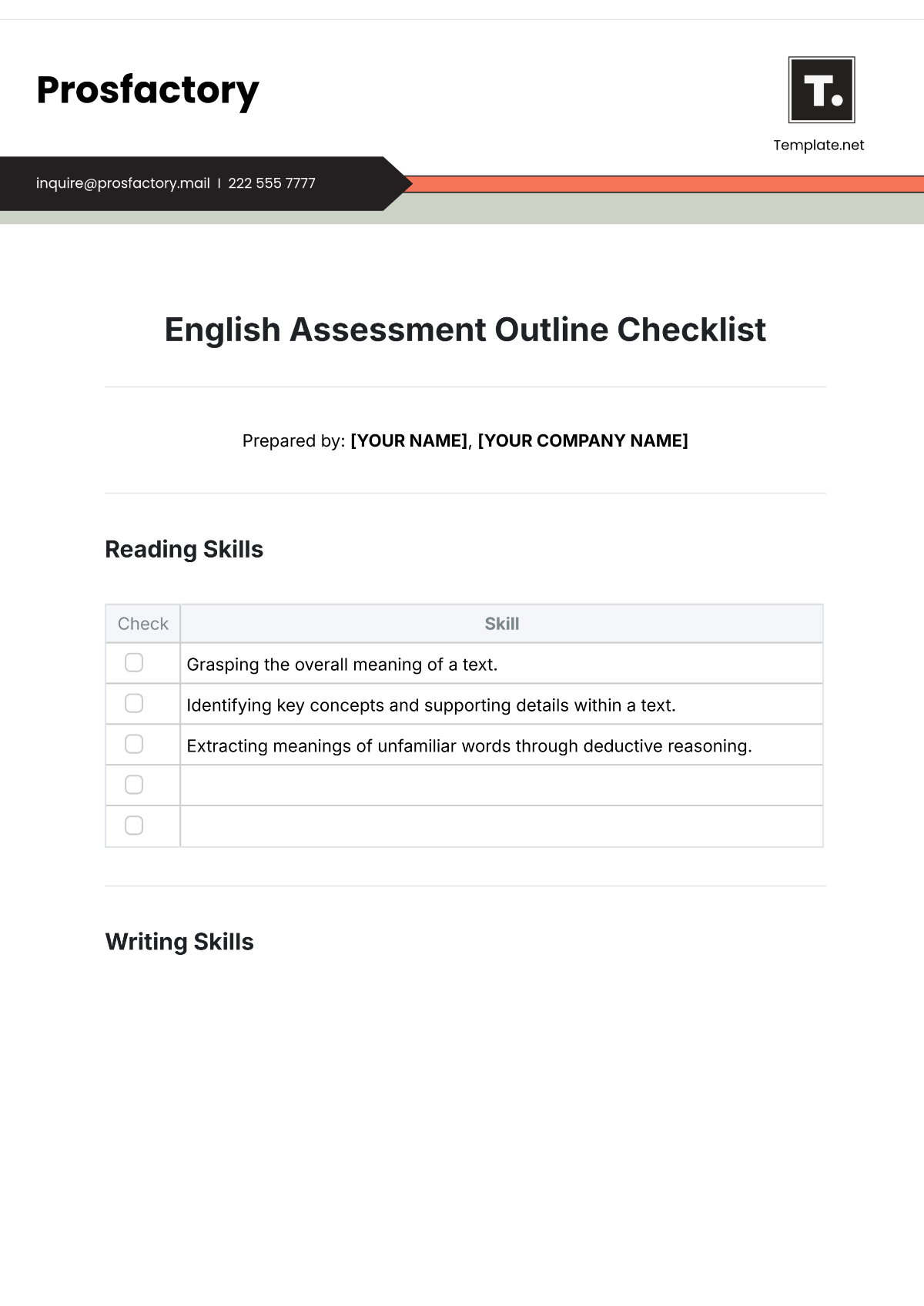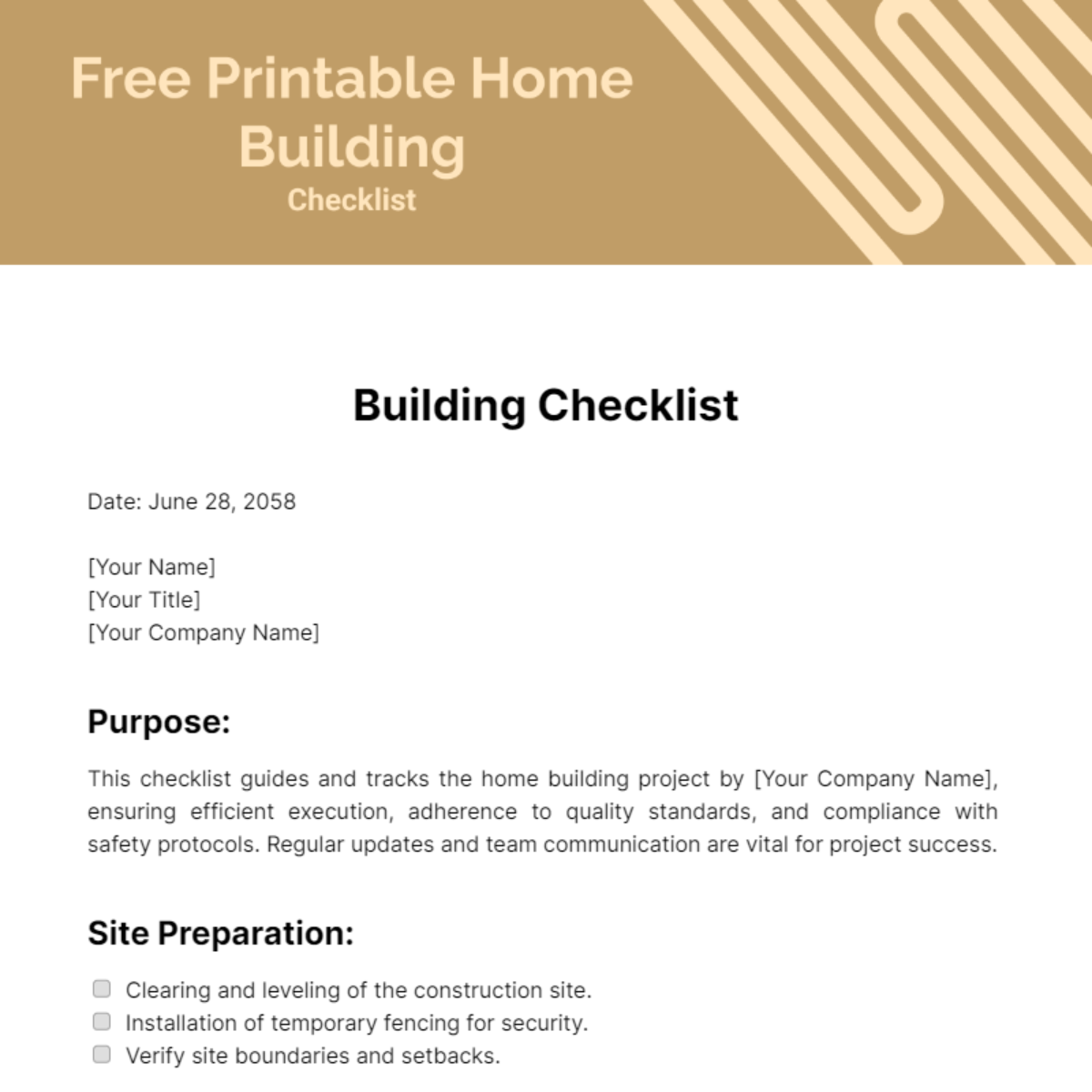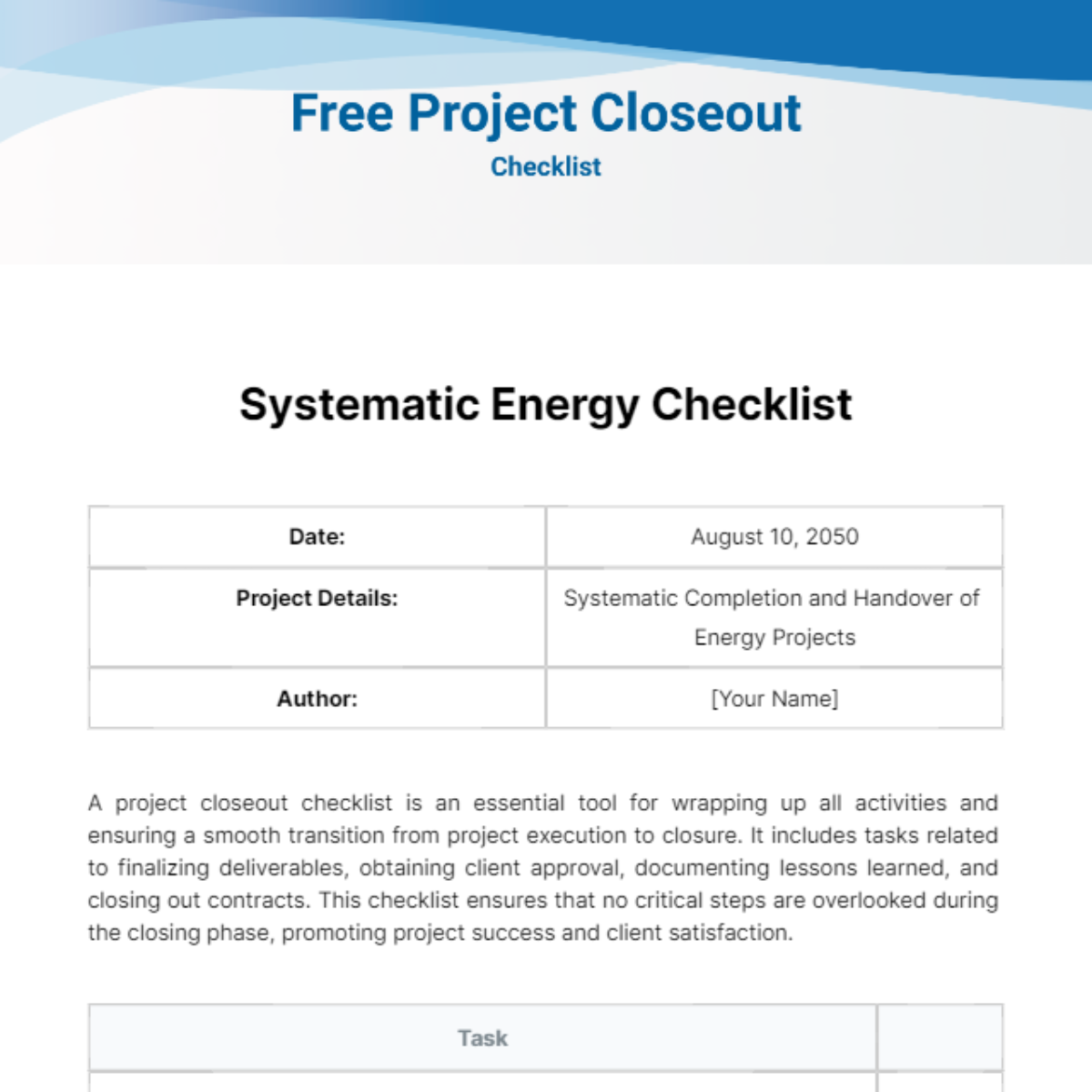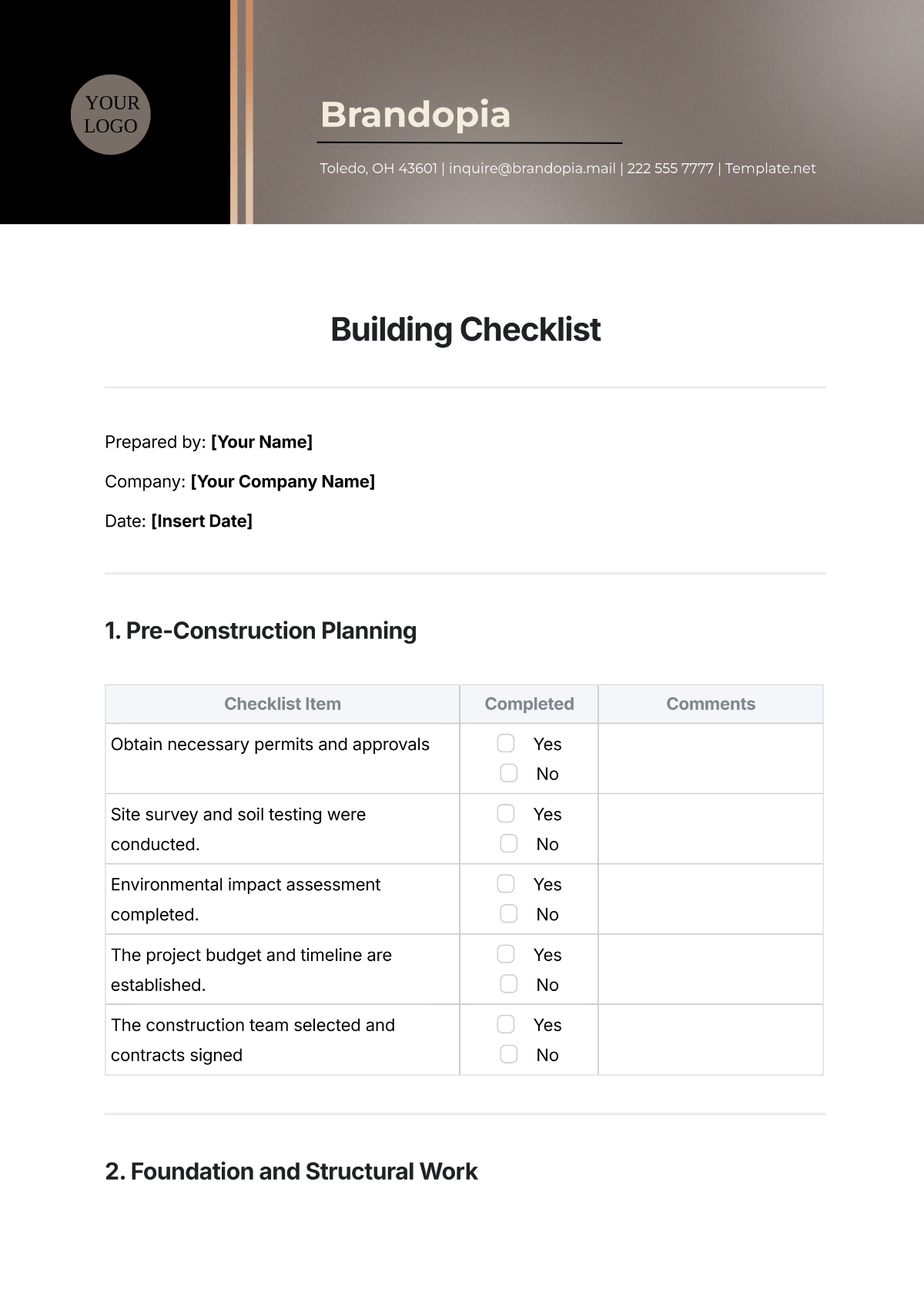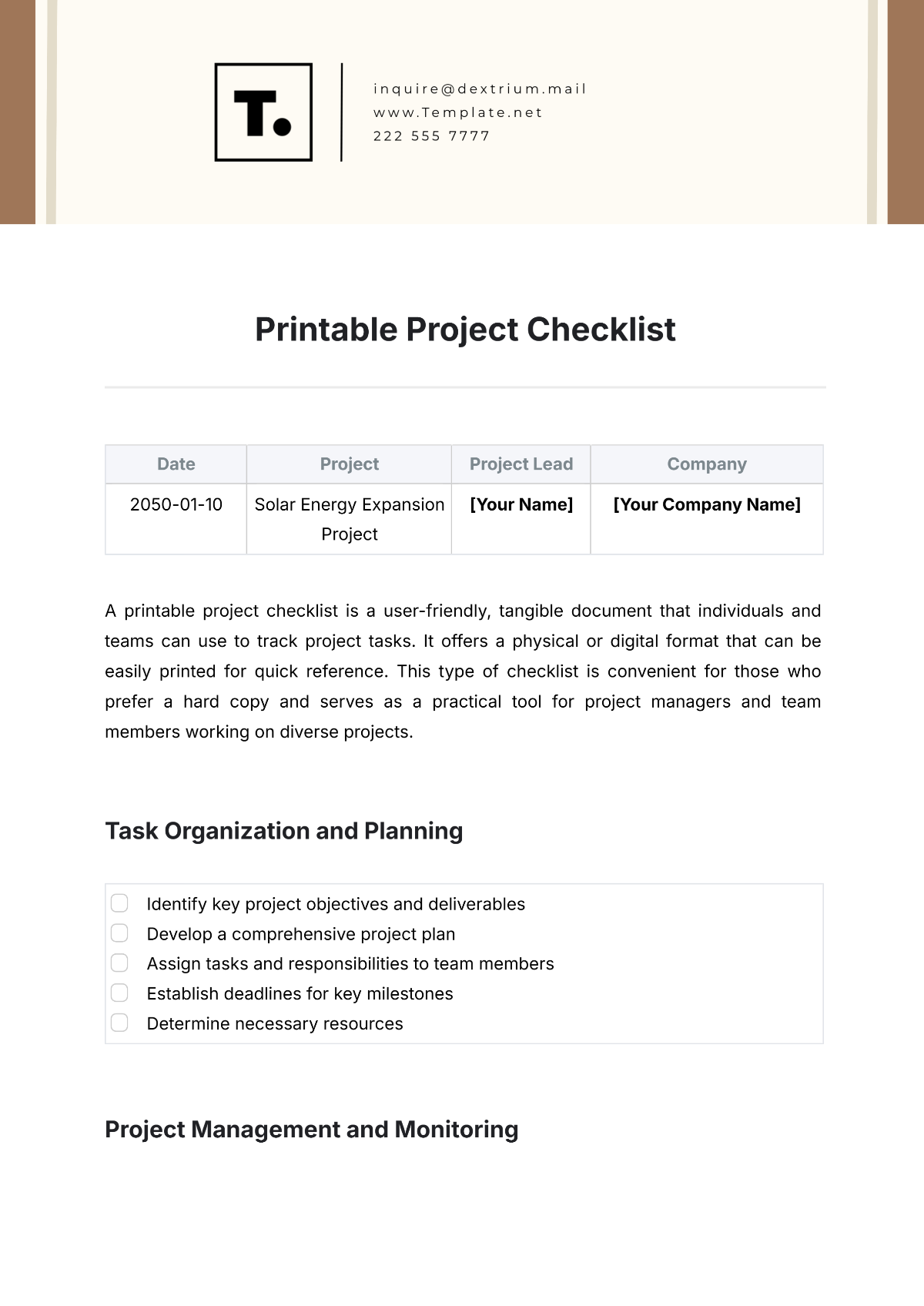Comprehensive Trade Show Checklist
Prepared by: [Your Name]
Date: [Date]
I. Pre-Event Preparation
A. Define Objectives and Goals
Establish clear goals (e.g., lead generation, brand awareness, product launch).
Identify key performance indicators (KPIs) to measure success.
B. Booth Design and Layout
Finalize booth design (size, branding, interactive elements).
Order booth materials and ensure branding is consistent.
Arrange for power, internet, and other technical requirements.
C. Product and Display Selection
Choose products or services to showcase.
Ensure all products are in good condition and ready for display.
Organize product literature, samples, and promotional materials.
D. Marketing Materials
Prepare brochures, flyers, business cards, and giveaways.
Create banners, signs, and digital content for booth displays.
Plan social media posts and digital ads leading up to the event.
E. Staff and Team Preparation
Assign roles to team members (e.g., booth attendants, lead collectors).
Provide training on product knowledge and sales pitches.
Ensure staff knows the event schedule, venue layout, and logistics.
F. Registration and Travel Arrangements
Register for the trade show and secure badges.
Book travel accommodations (flights, hotels, transportation).
Arrange for booth shipping and transport logistics.
II. Logistics & Travel
A. Transportation
Confirm booth shipment and arrival dates.
Arrange for transportation of materials, equipment, and products.
Plan transportation for staff to and from the event.
B. Accommodations
Book hotel rooms near the venue.
Confirm reservation details and share them with team members.
C. Shipping & Storage
Ensure booth materials are packed securely and labeled.
Coordinate storage or onsite delivery of extra materials.
III. Exhibit Setup
A. Booth Assembly
Arrive early to set up the booth.
Set up furniture, signage, and product displays.
Test electrical equipment, Wi-Fi, and audiovisual setups.
B. Technology Setup
Ensure all devices (e.g., tablets, screens, charging stations) are operational.
Test software or digital presentations in advance.
C. Final Checks
Verify the booth is clean and well-organized.
Double-check signage, promotional materials, and product displays.
IV. Team Roles & Responsibilities
A. Assign Booth Responsibilities
Assign staff to tasks such as greeting visitors, conducting demos, or managing lead collection.
Create a schedule for team shifts to ensure coverage throughout the event.
B. Set Communication Channels
Provide team members with communication tools (e.g., walkie-talkies, group messaging apps).
Set protocols for addressing questions or issues during the event.
V. Marketing & Promotion
A. Pre-Event Marketing
Post teasers on social media about your participation in the trade show.
Send email newsletters with event details to your mailing list.
Offer exclusive promotions or incentives to draw visitors to the booth.
B. During-Event Marketing
Use live social media updates to engage with attendees.
Collect leads and make real-time connections with potential clients or partners.
Offer demonstrations, product samples, or contests to increase engagement.
C. Post-Event Marketing
Send thank-you emails to all leads collected during the event.
Follow up with contacts on social media or via email to continue the conversation.
Analyze the event’s success and gather feedback for future improvements.
VI. Lead Generation & Follow-Up
A. Lead Collection
Use lead capture forms, business card collections, or digital apps to gather attendee information.
Qualify leads based on interest and potential.
B. Lead Management
Organize collected leads into categories (e.g., high priority, medium priority).
Input data into your CRM system for future outreach.
C. Follow-Up Strategy
Send personalized follow-up emails to each lead.
Offer post-event discounts, demos, or consultations to encourage conversions.
Set up calls or meetings for in-depth discussions with promising leads.
VII. Post-Event Evaluation
A. Assess Event Performance
Review KPIs and measure the success of your goals.
Discuss with your team what went well and areas for improvement.
B. Gather Team Feedback
Hold a debriefing session with your team to gather insights on the event.
Identify any logistical issues or challenges that could be addressed in future trade shows.
C. Report Results to Stakeholders
Compile a summary of leads, sales, and other outcomes.
Share the results with key stakeholders (management, marketing teams, etc.) to highlight the ROI of attending the trade show.
